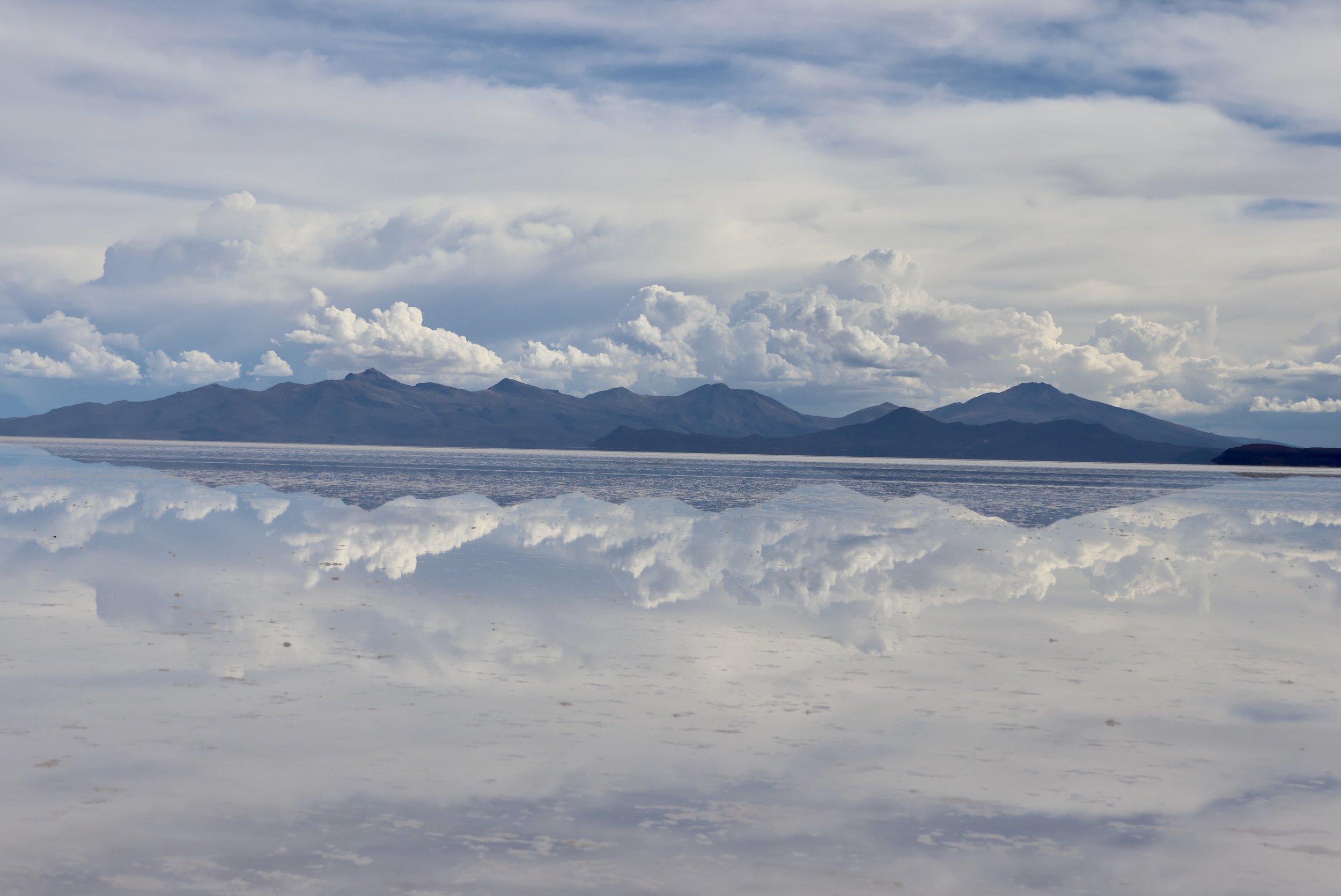Uyuni Salt Flats & Bolivian Desert
Uyuni is a small town in southern Bolivia known for the Salt Flats located just outside of town. The popular adventure that most tourists do is a 3-day, 2-night Salt Flats Tour. You might be thinking to yourself, “3 days in a desert that is completely devoid of all life and natural landscapes just to take a silly photo on the flat ground?” And you'd be thinking exactly what Matt thought when Susan proposed this activity. Luckily the name hides the incredible sights and wonder of the high-mountain plateau which is where you actually spend most of your time; the salt flats are just the bait that gets people to visit. We were blown away by what we saw around Uyuni and knew we would have to come back to see more of the grand vistas offered.
The tour starts with some sights around Uyuni. Uyuni is a tiny town that was founded to mine the salt and other minerals found nearby. There really isn't much else to this town so the “sights” were an abandoned train graveyard where old trains were simply left on old tracks that are no longer in use. There is also a small salt workshop next to some mines where we learned how the locals actually harvest, process, and bag the salt to sell.
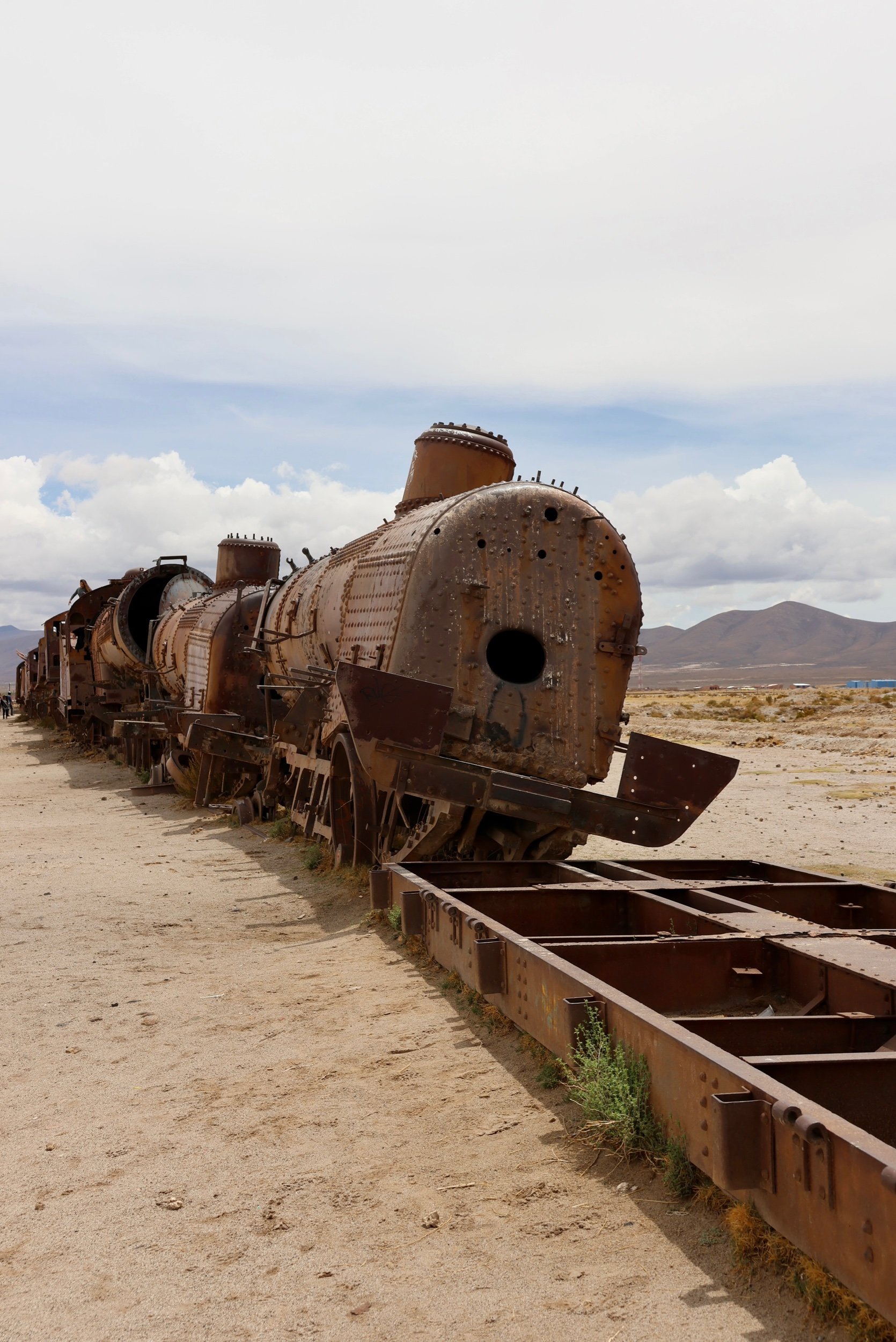
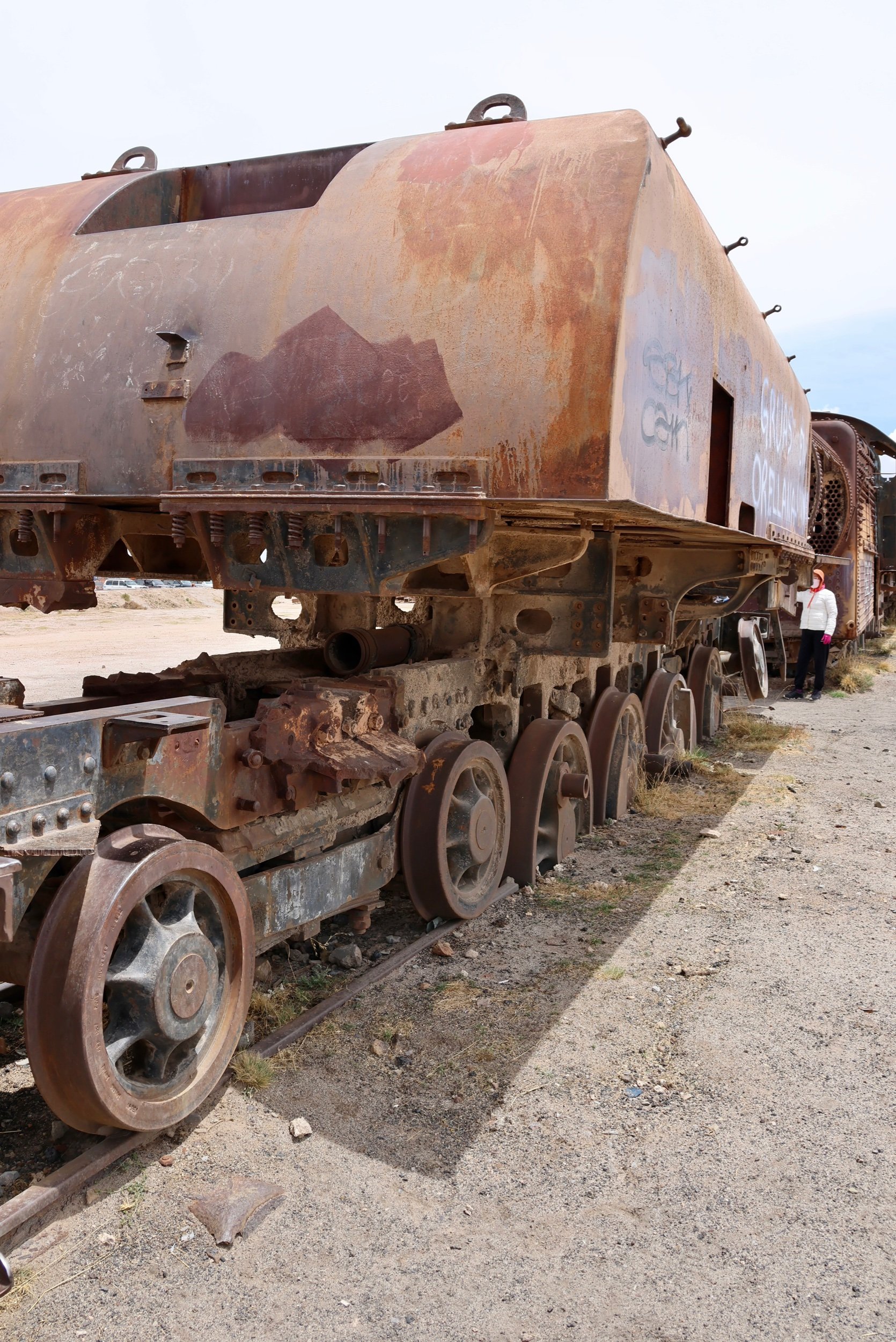

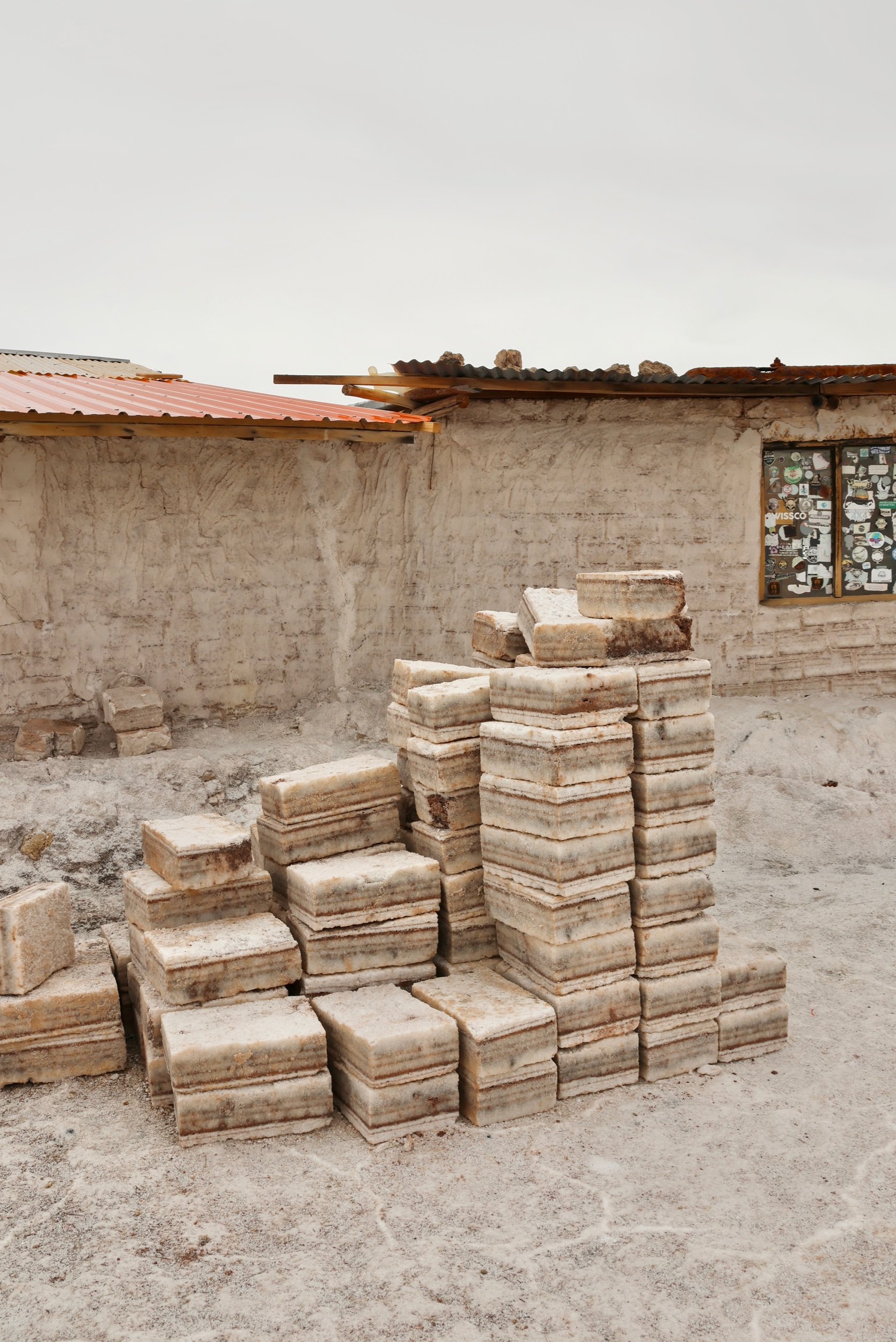

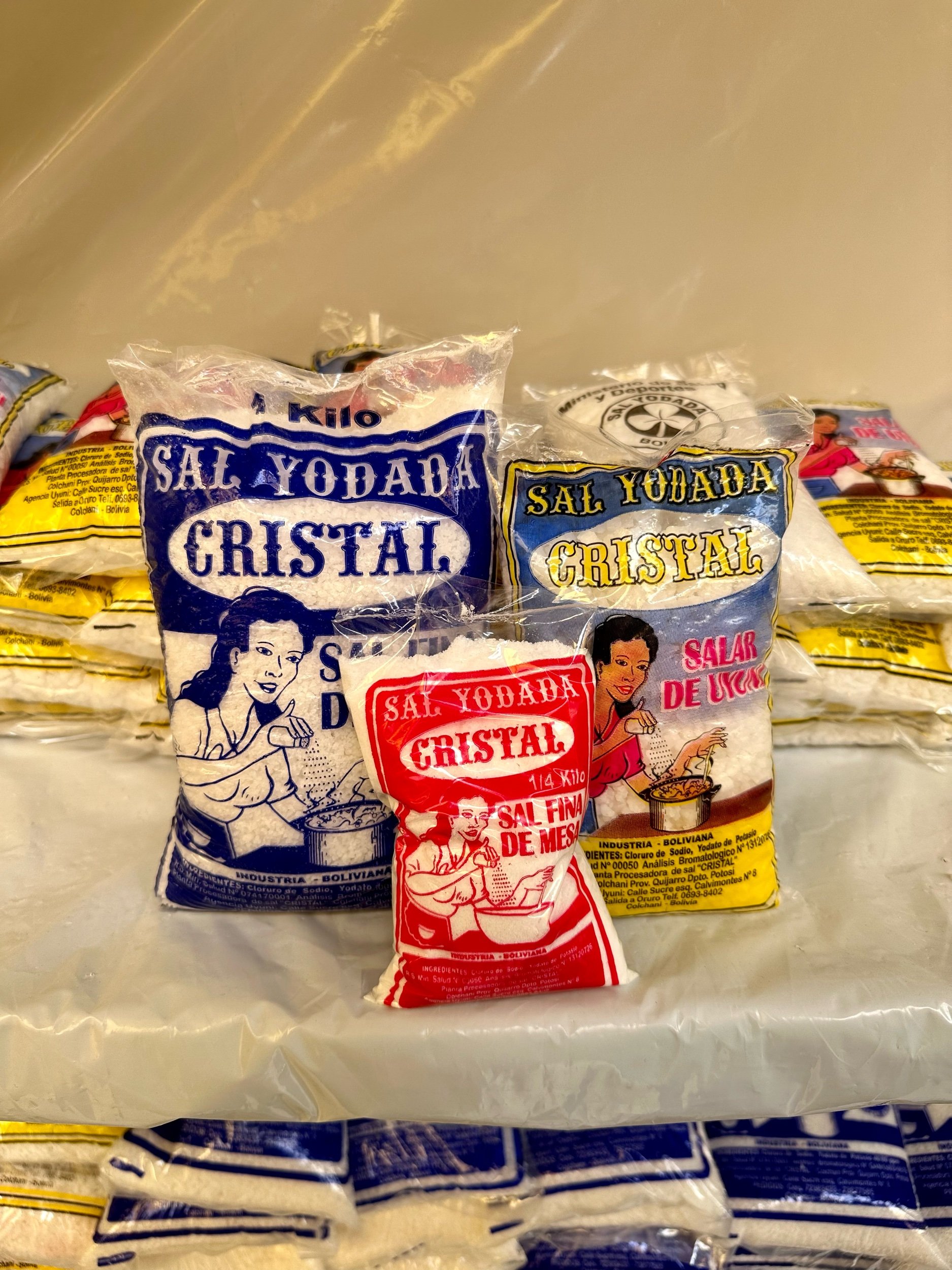
After that we drove out to the salt flats! All the tours follow similar routes and start at similar times so we were driving in a large pack of Toyota Land Cruisers since that's what every tour used for their vehicles. Our tour consisted of the two of us, a driver, a guide, and 3 other tourists all from Germany. The Land Cruiser had all of our bags and supplies for the next 3 days so it was pretty tight!
The salt flats are called the Salar de Uyuni, or just the Salar for short. The Salar used to be at the bottom of an ancient sea until plate tectonics caused the region to upswell above sea level and a part of the sea was cutoff from the rest of the ocean. With nowhere to drain, the water evaporated leaving all the natural salt and minerals sitting there on the ground. The region still gets rain but it doesn't have anywhere to drain, so every year during the wet season the Salar turns into a shallow lake before evaporating and drying out again. This process means the Salar is crazy flat and is also way too salty for anything to grow here. We were able to drive really anywhere we wanted but mostly followed established trails that were made by the drivers. There are mountains surrounding the Salar on all sides but they were very far in the distance; it was pretty wild to just be driving with no landmarks of any kind around you.
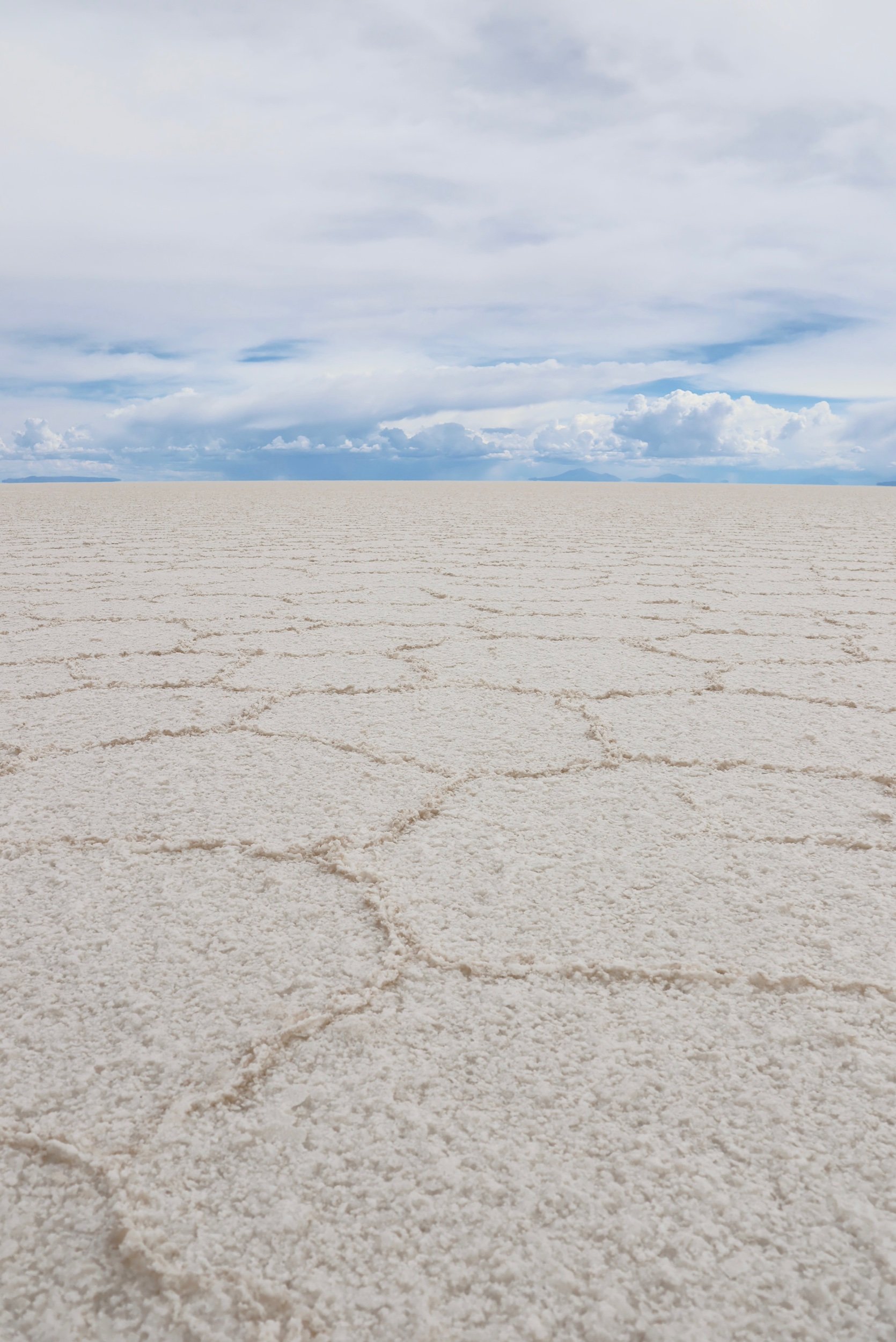


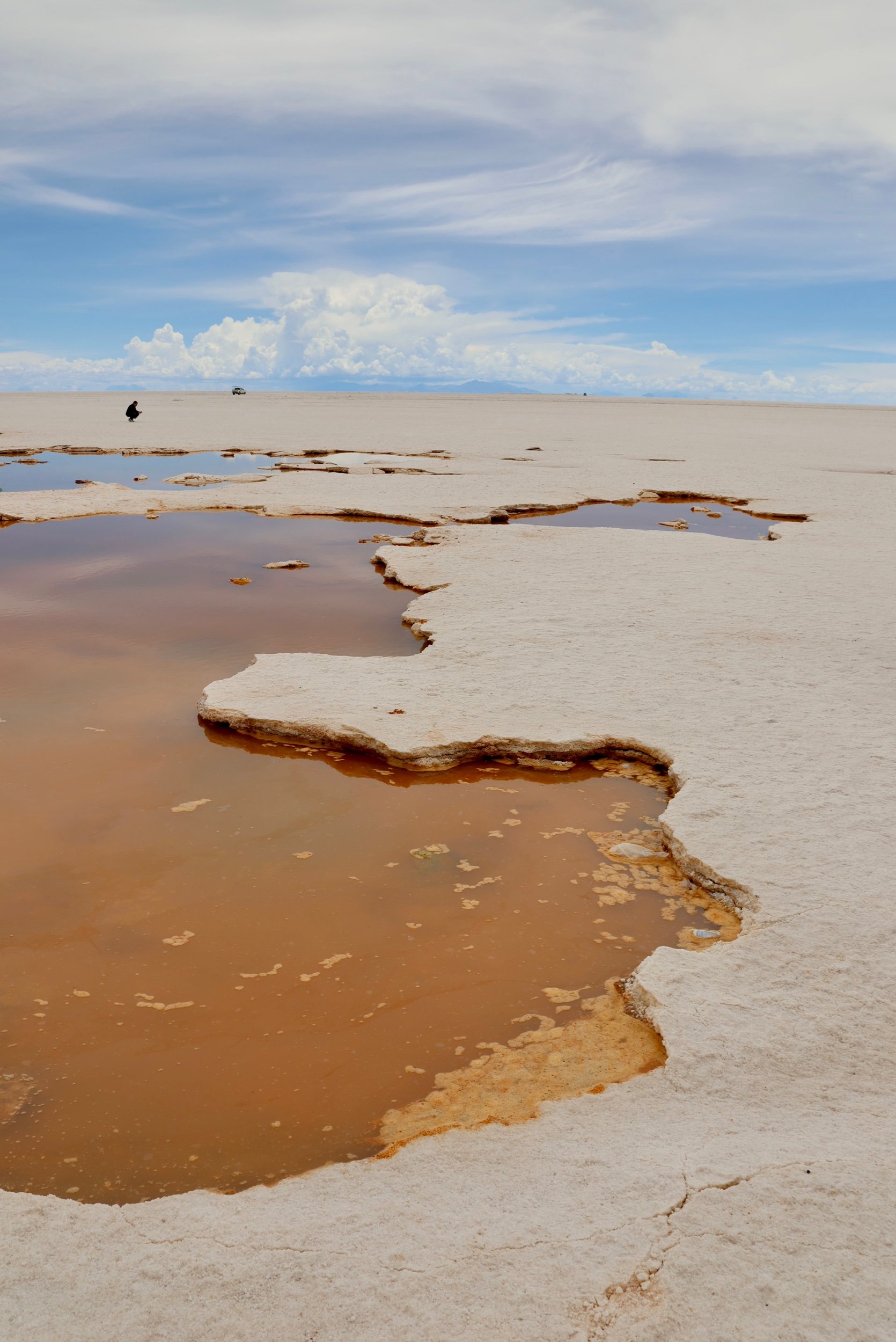
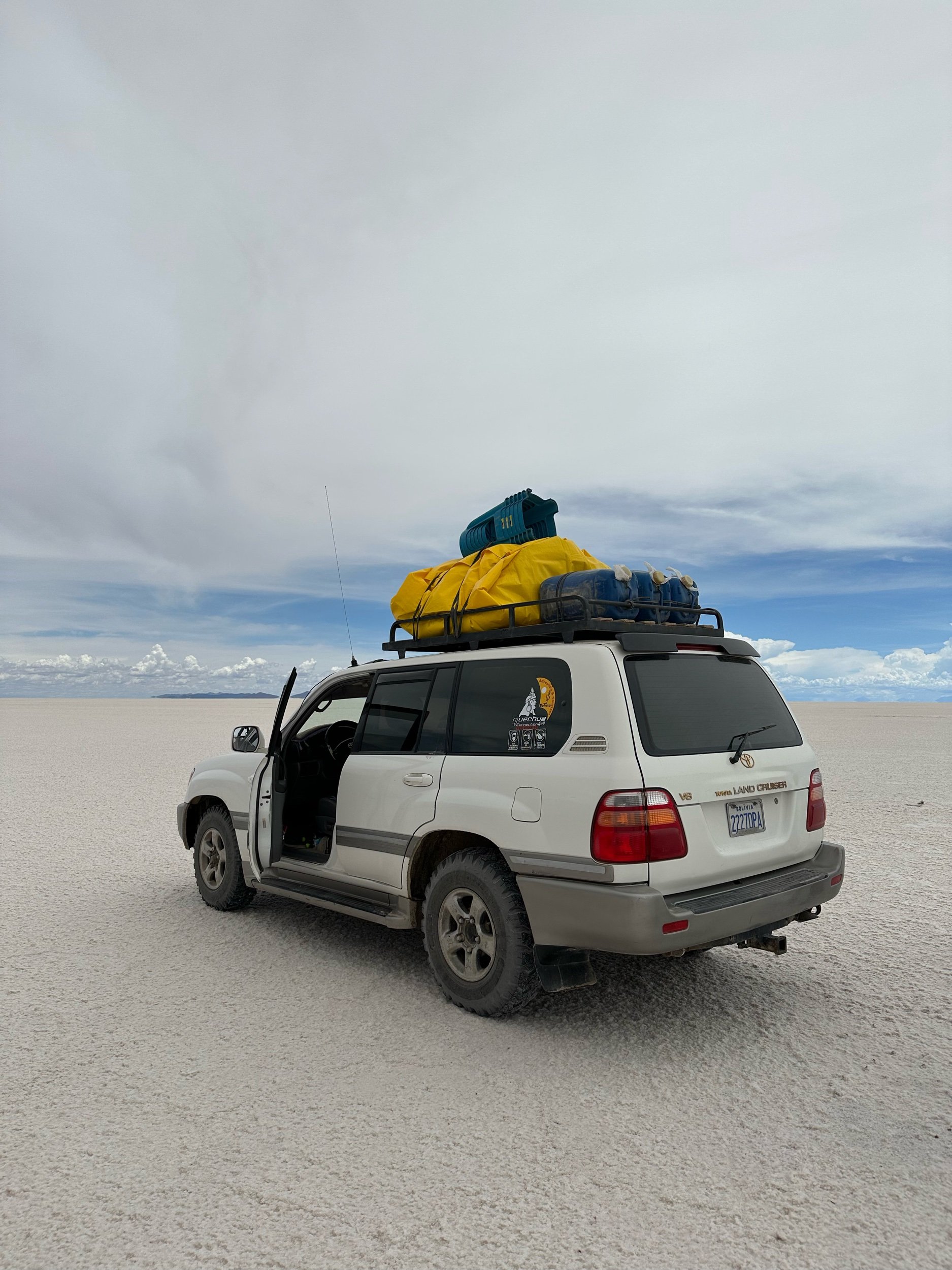
We stopped for lunch at an old hotel out on the Salar and rode bikes for 20 minutes on the salt. Our butts were still pretty sore from the Death Road bike ride so this was not very pleasant. After resting a bit, we drove out even more to the middle of nowhere and took some funny perspective shots that take advantage of just how flat the salt flats are.
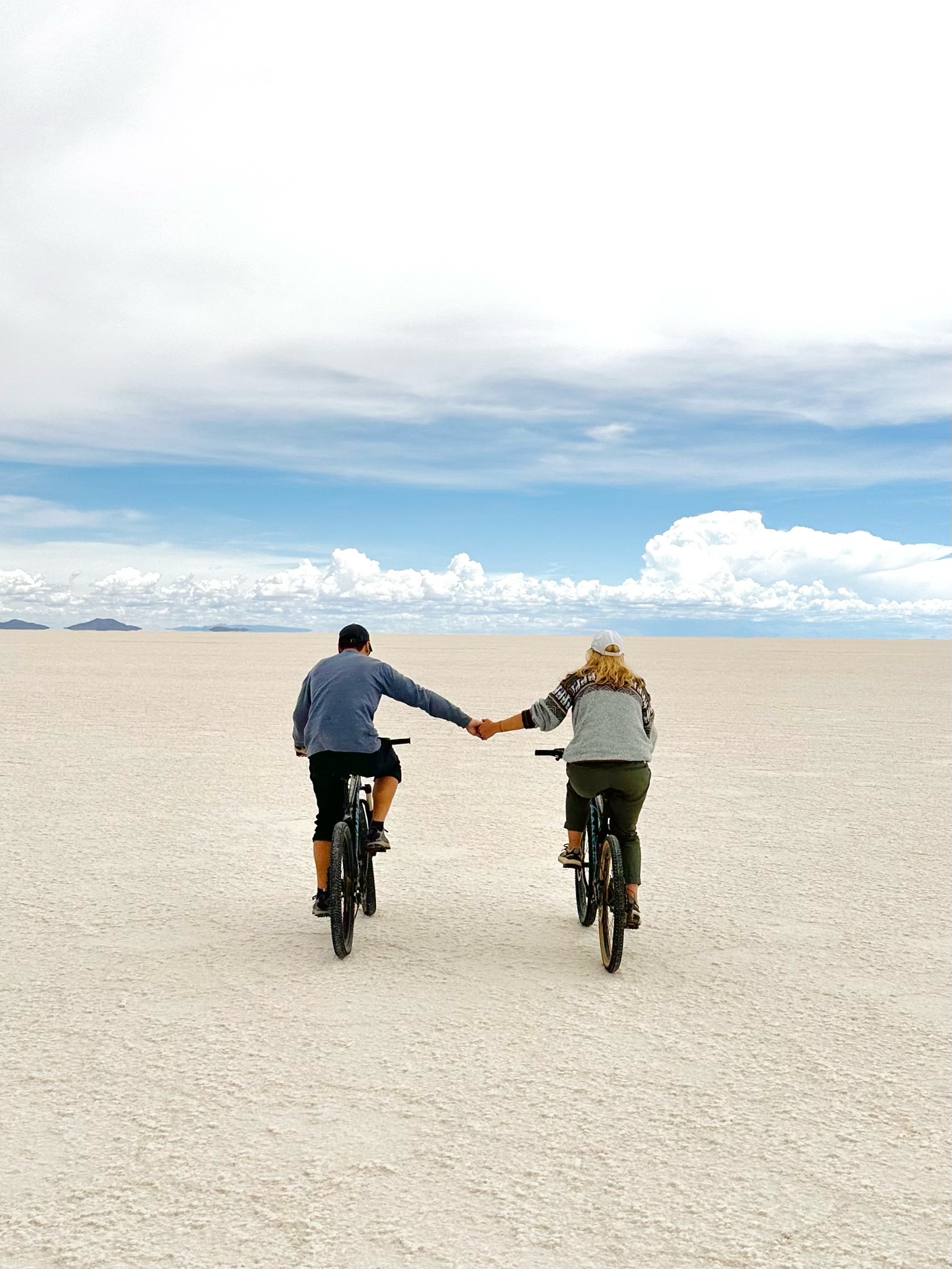
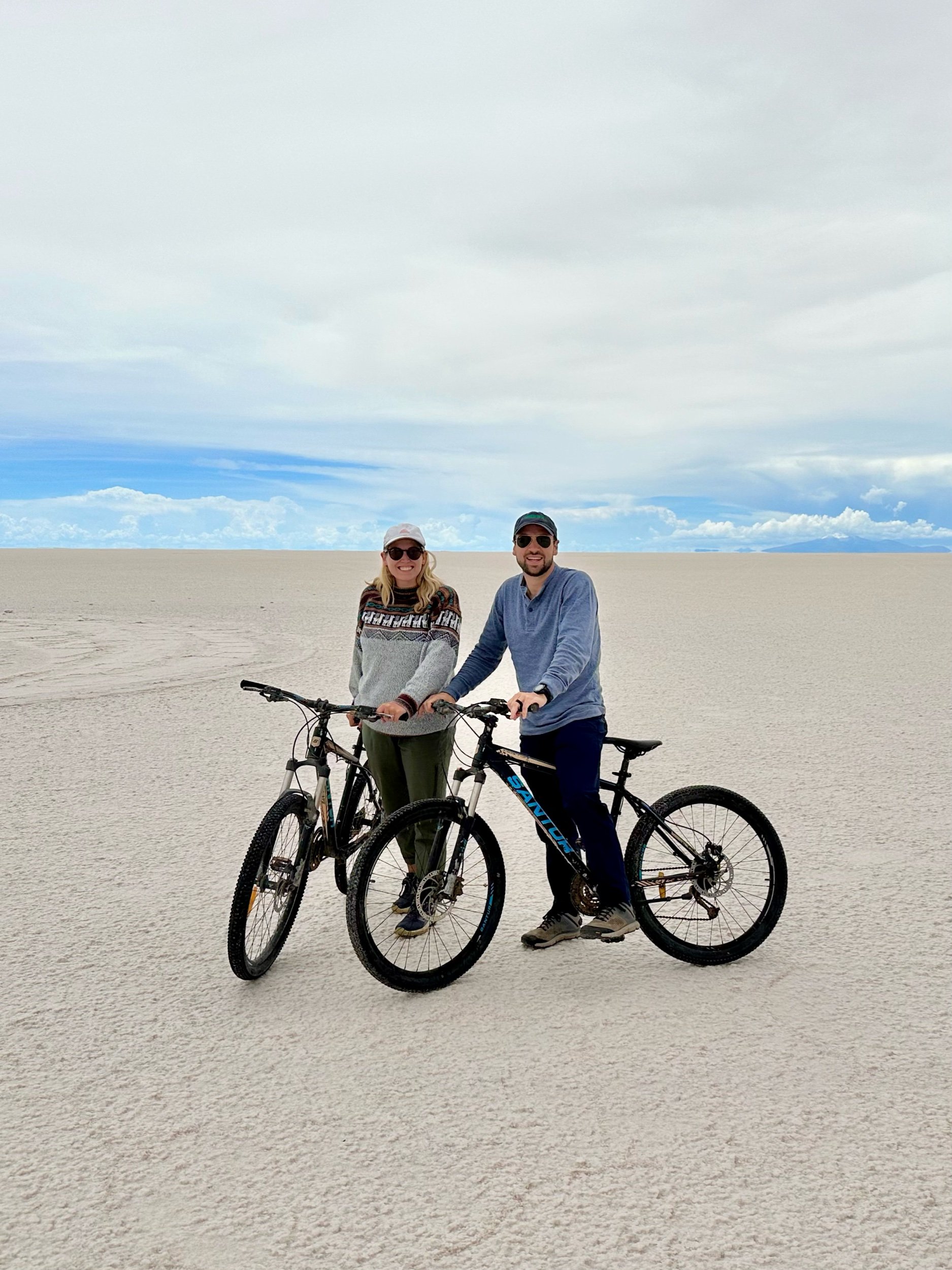
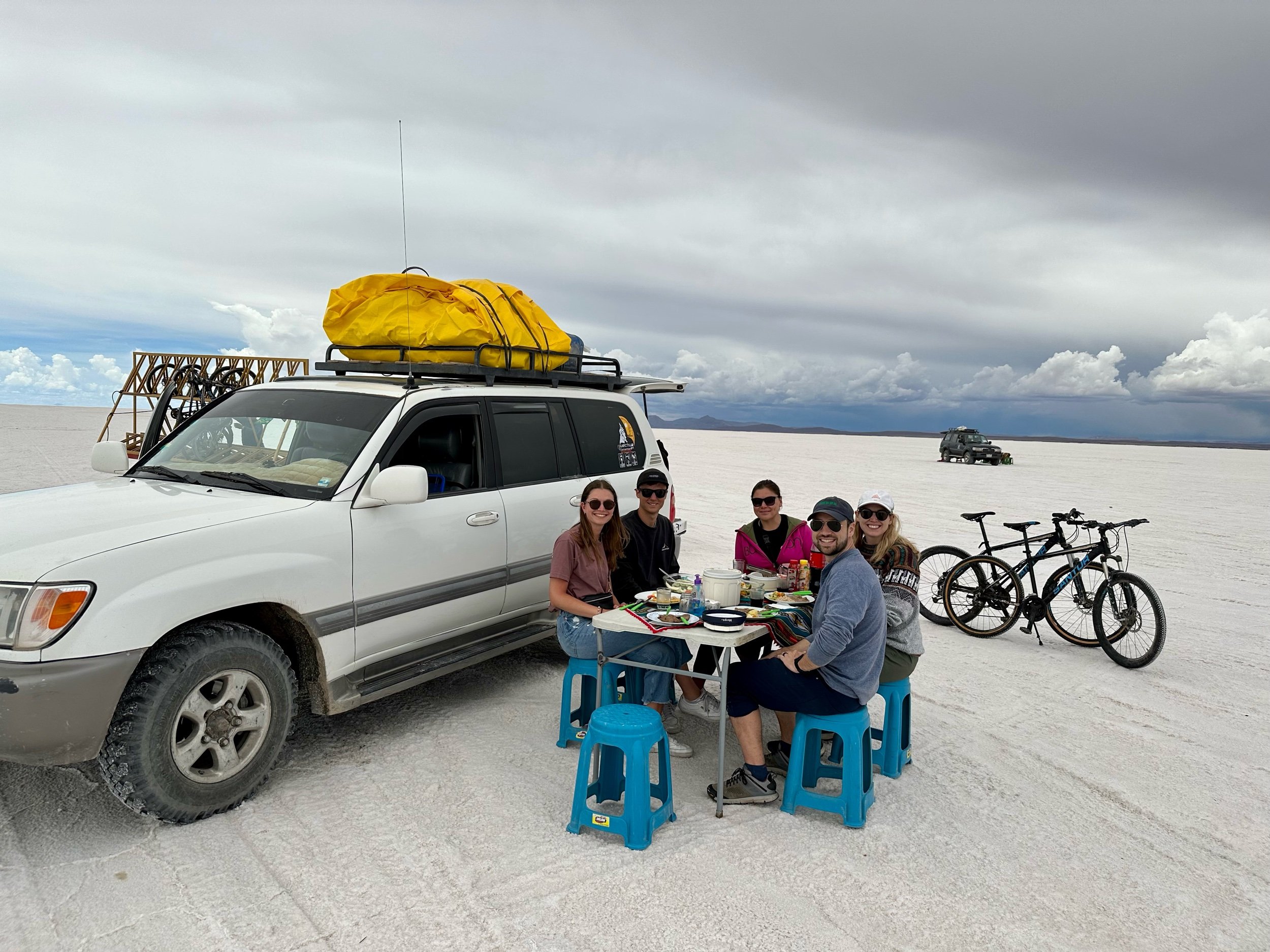
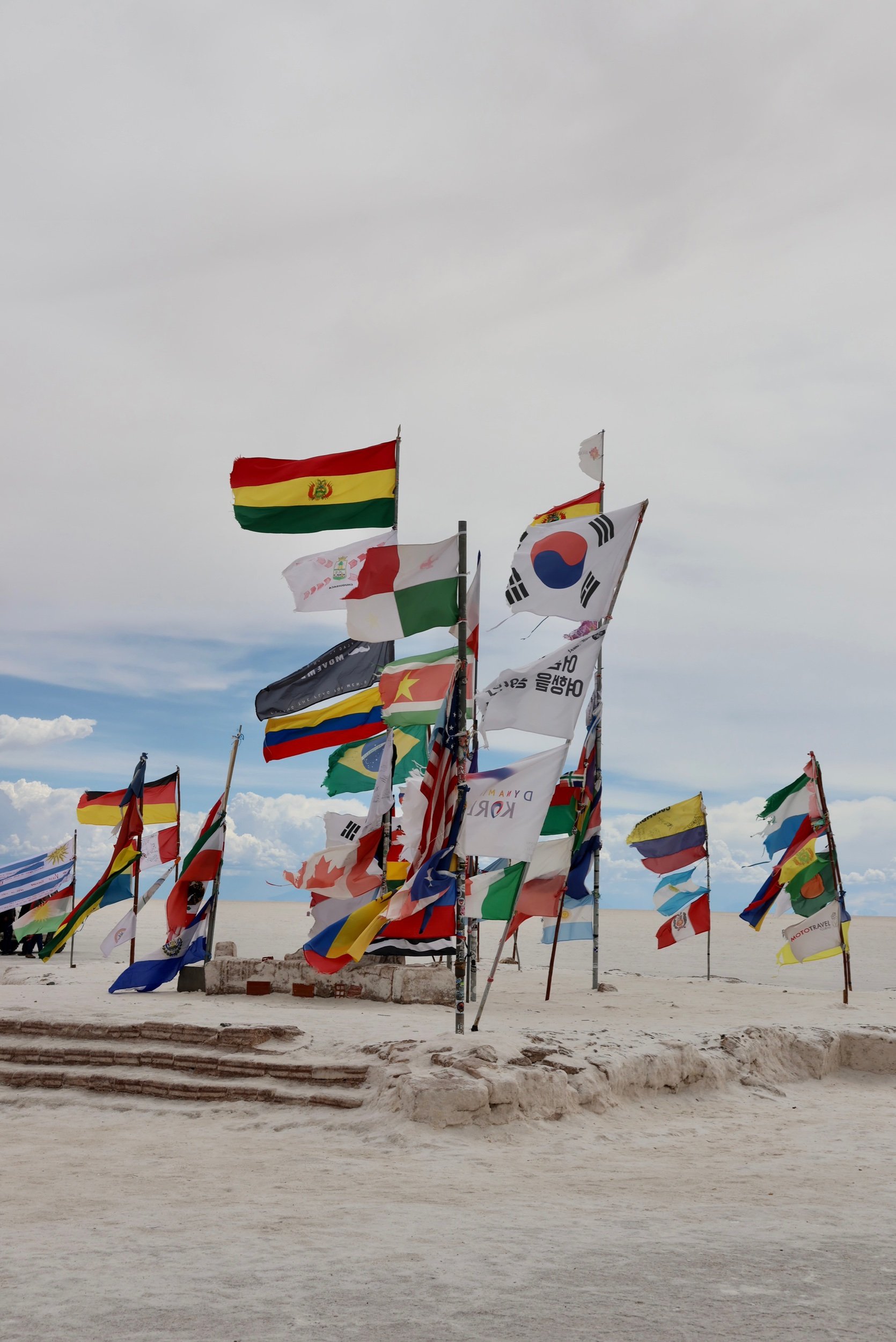
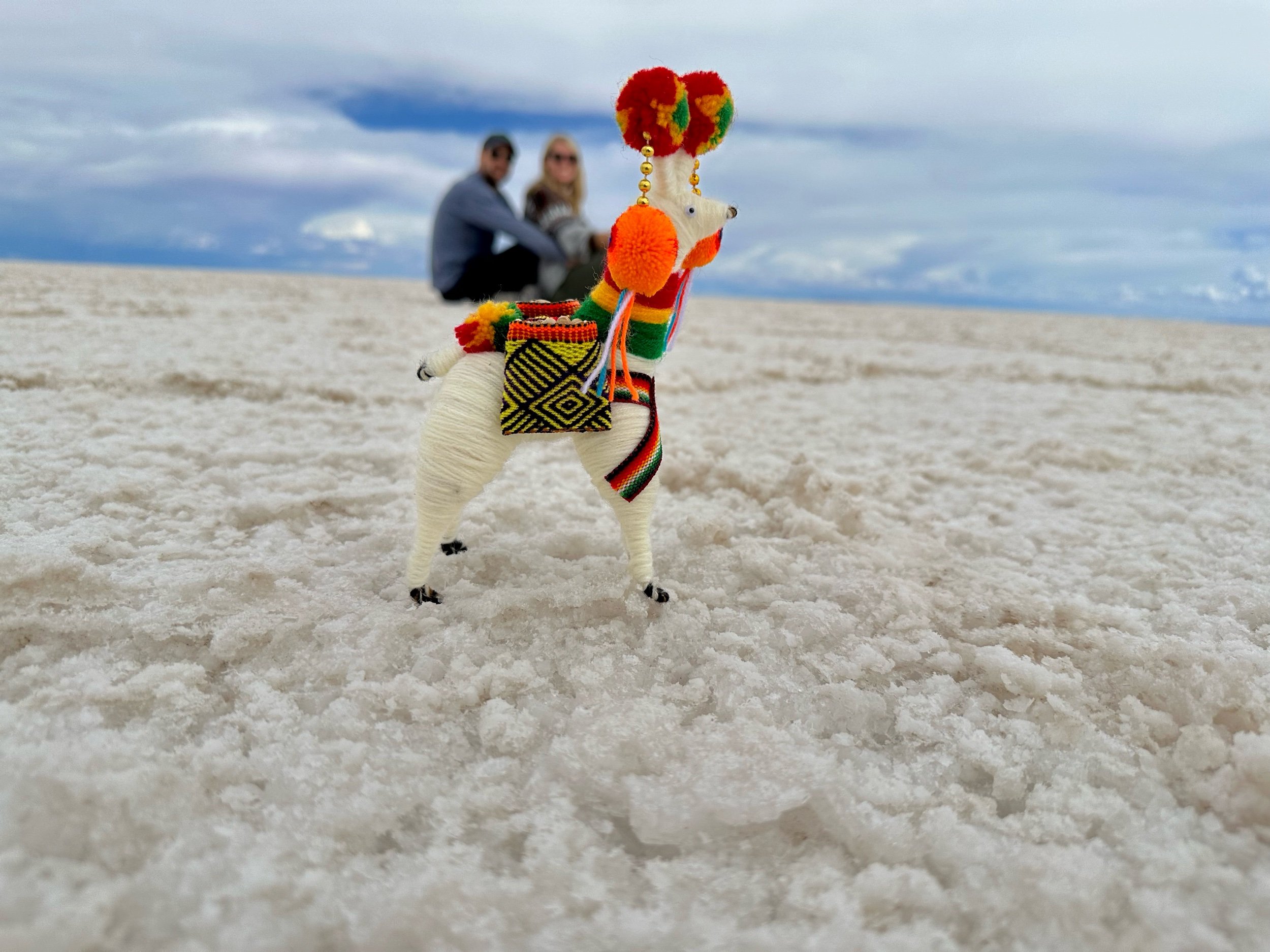

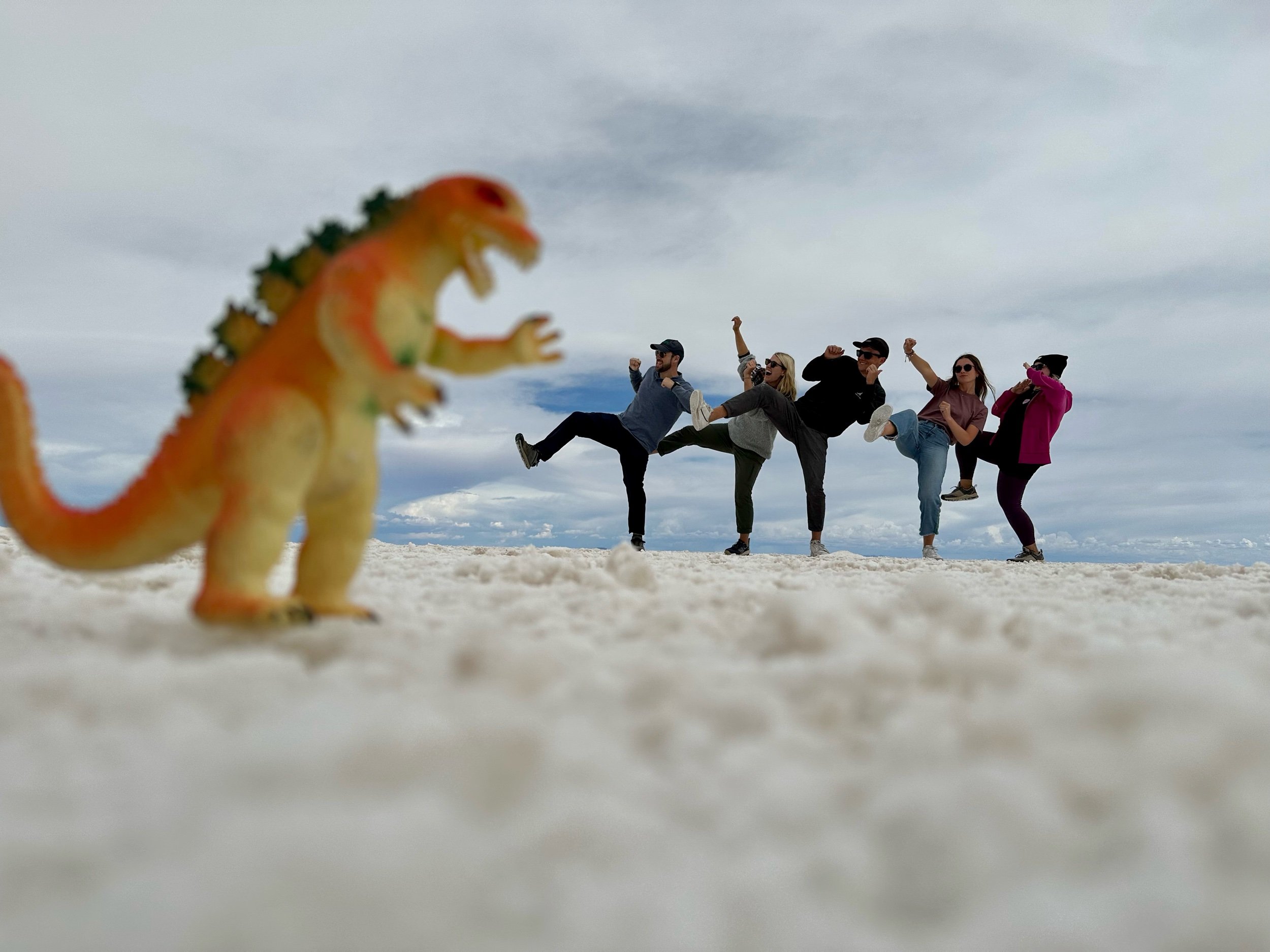
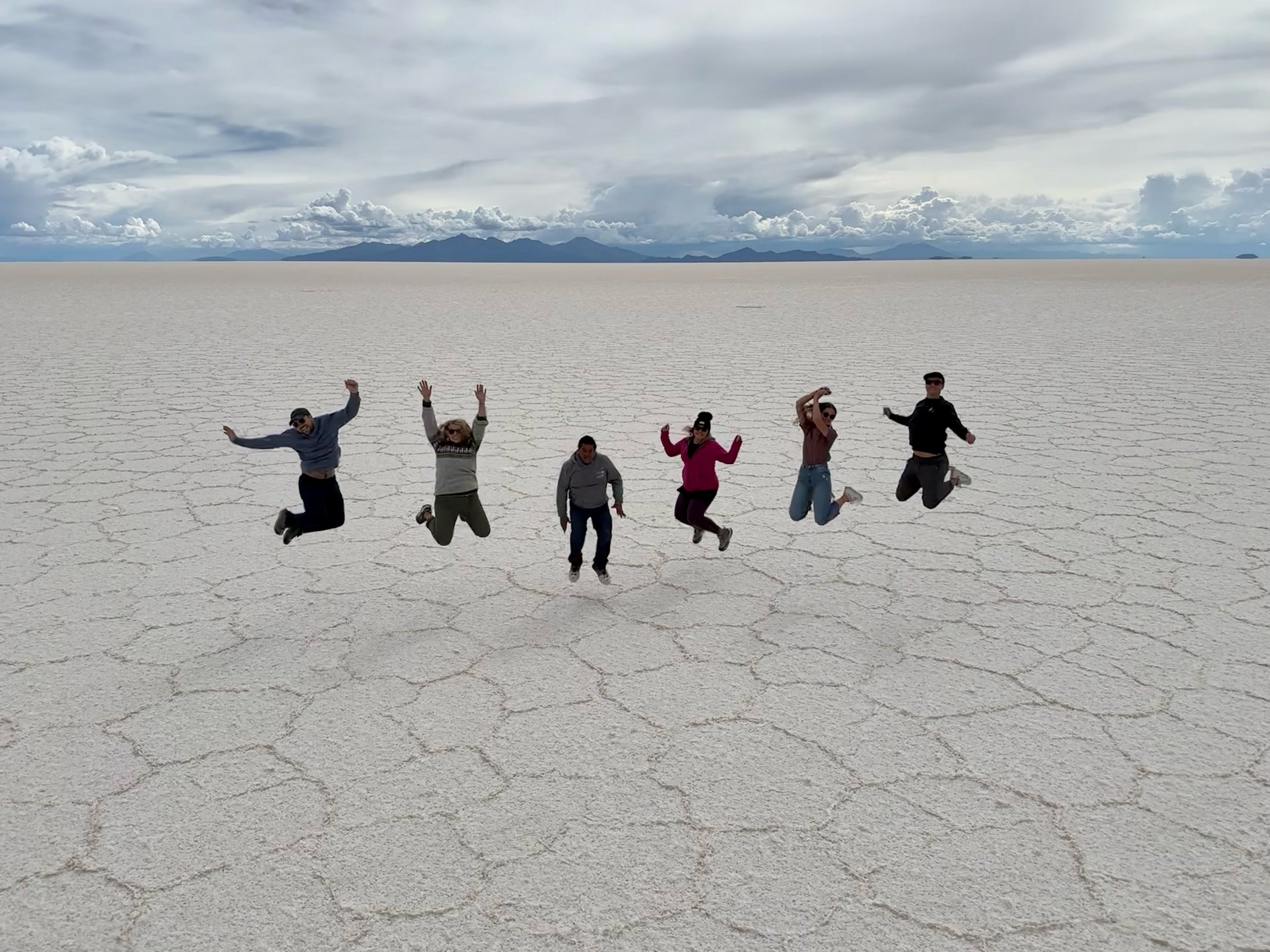
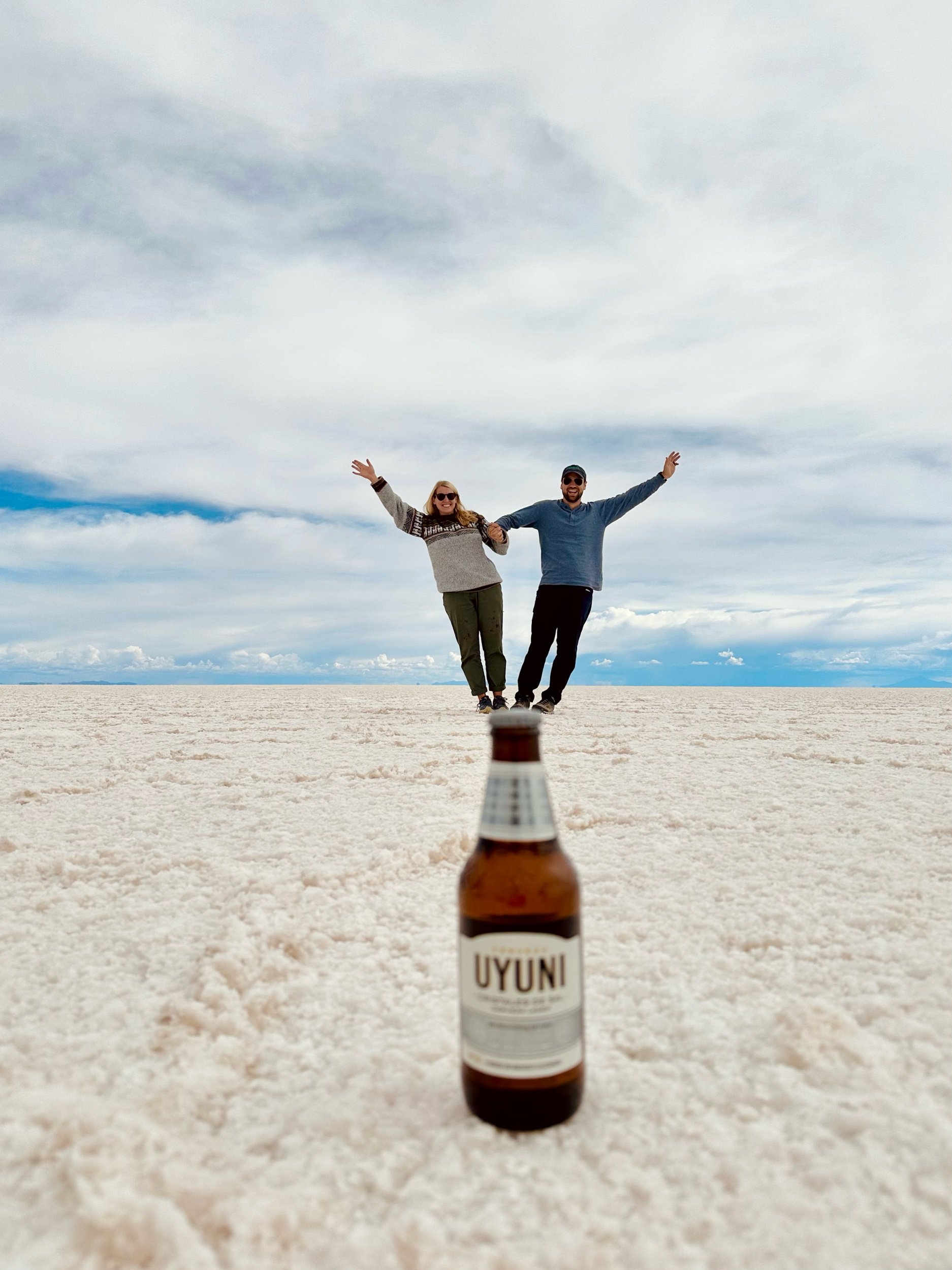
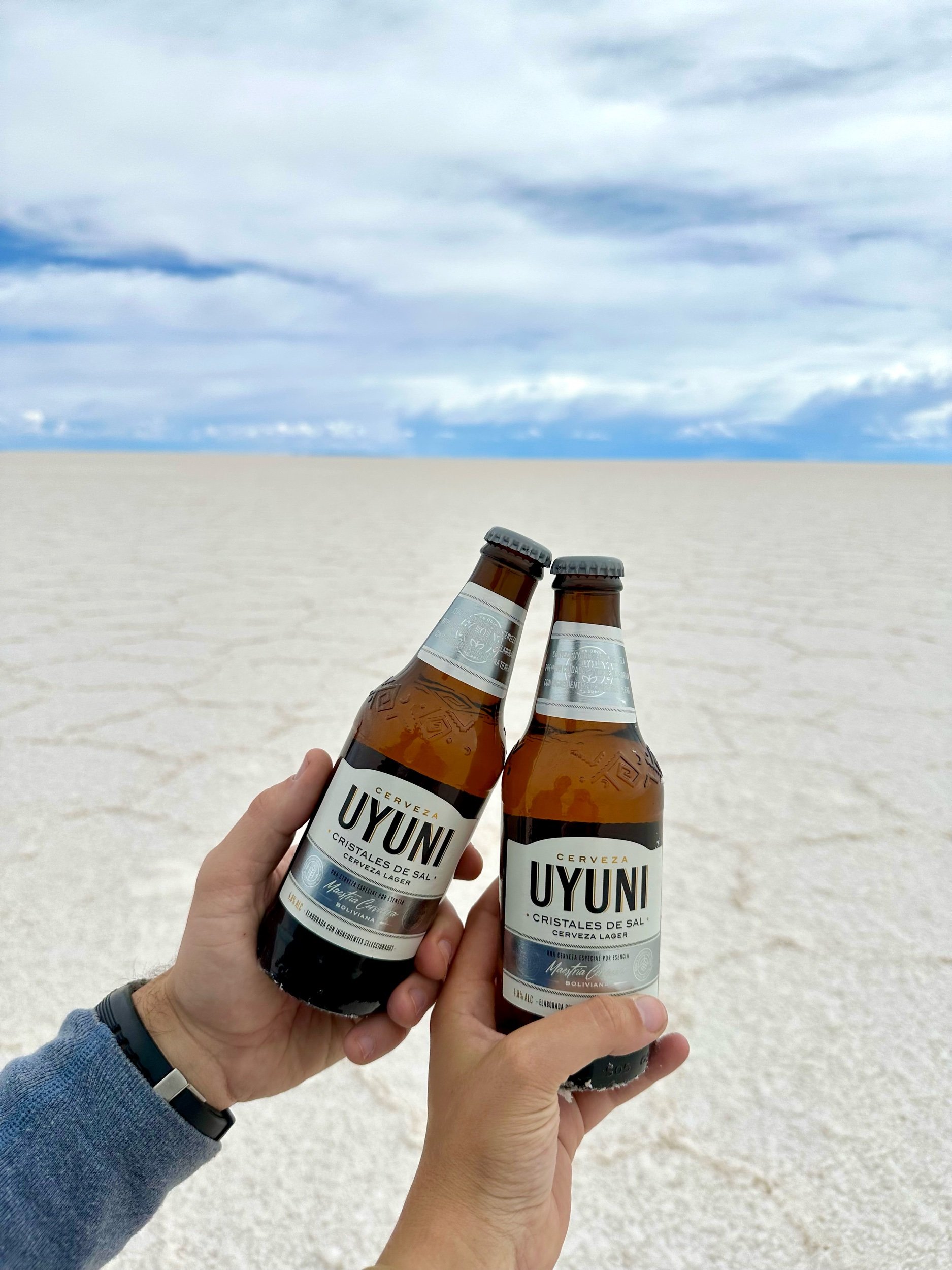
We were in Uyuni at the start of the wet season so there was some water along the way already on the Salar. We didn't have the perfect reflection you see in the brochures but we were still able to see some great perspectives reflecting the sky and surrounding mountains.
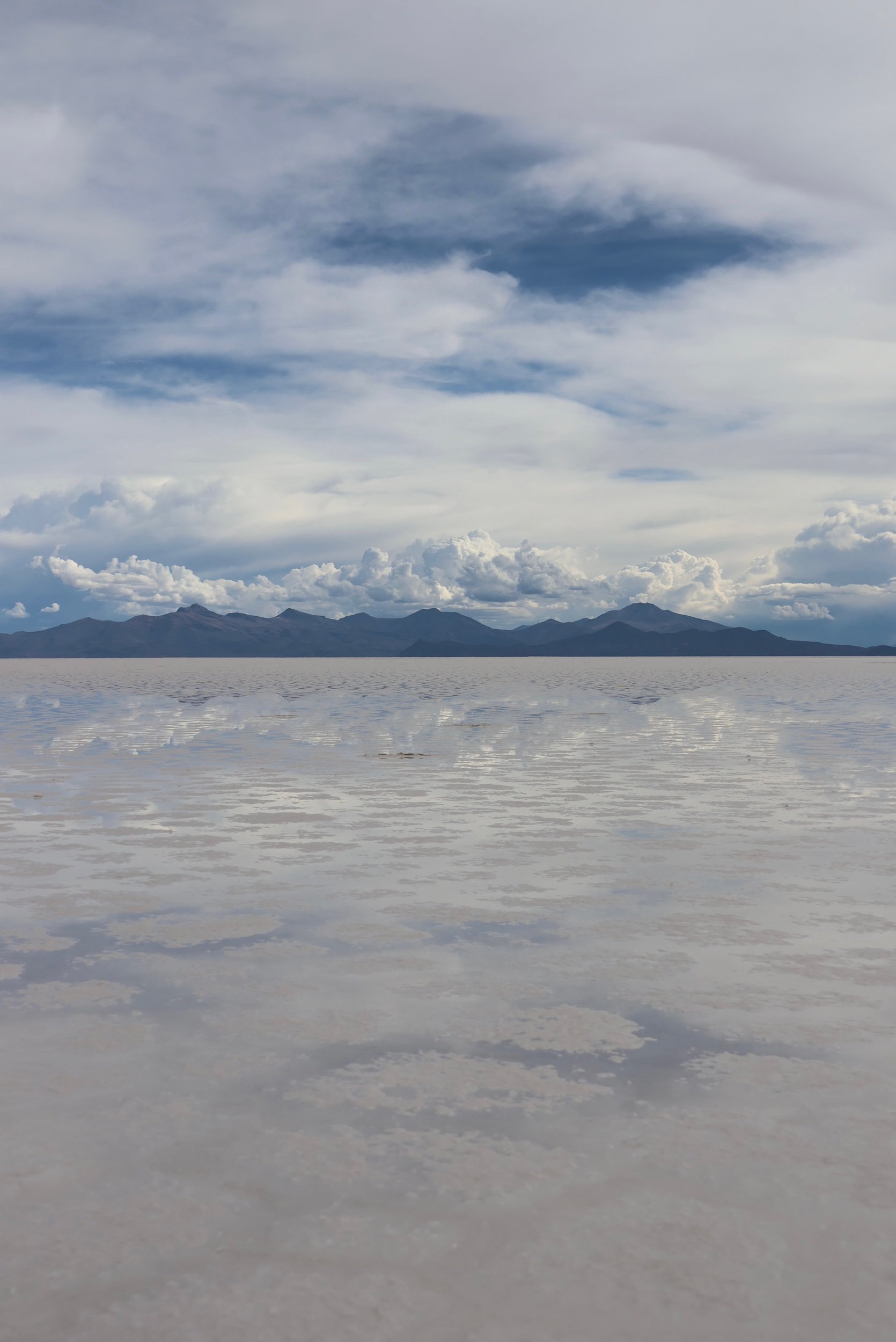
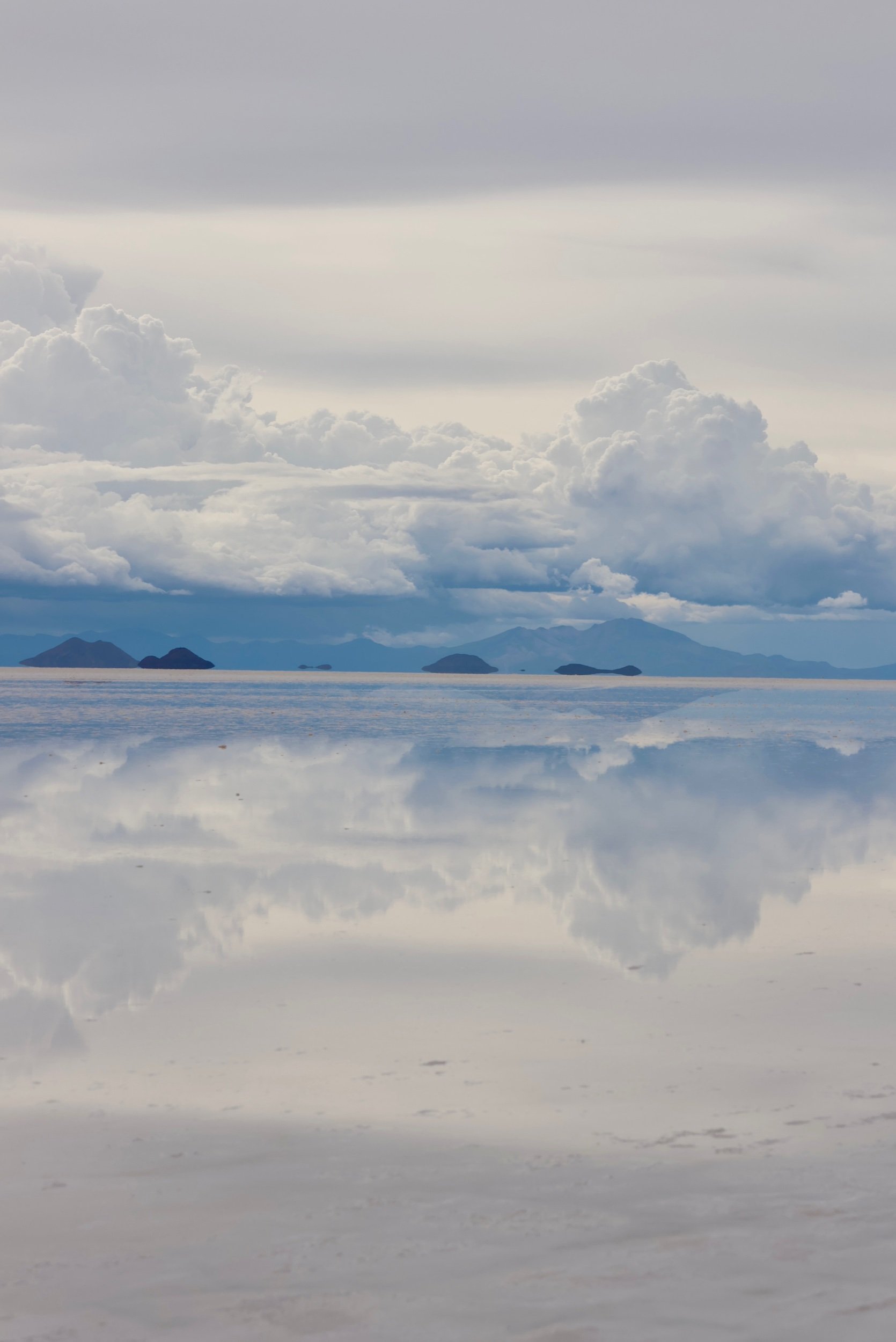
Our destination the first day was Isla Incahuasi, an “island” located in the north part of the Salar. The Isla Incahuasi is a rock formation made out of fossilized coral from the dried ocean. The island is full of huge cactuses that are able to thrive with the little precipitation they get. The local population would actually use these cactuses as wood and you could still see some doors and structures built using cactus wood. We left the island and headed to our hotel for the night, Tambo Loma. This original structure of this hotel was built using bricks made out of dry salt which was really cool; there is seriously so much salt here. On the way we got an incredible sunset and stopped for some wine, crackers, and cookies to enjoy the view.
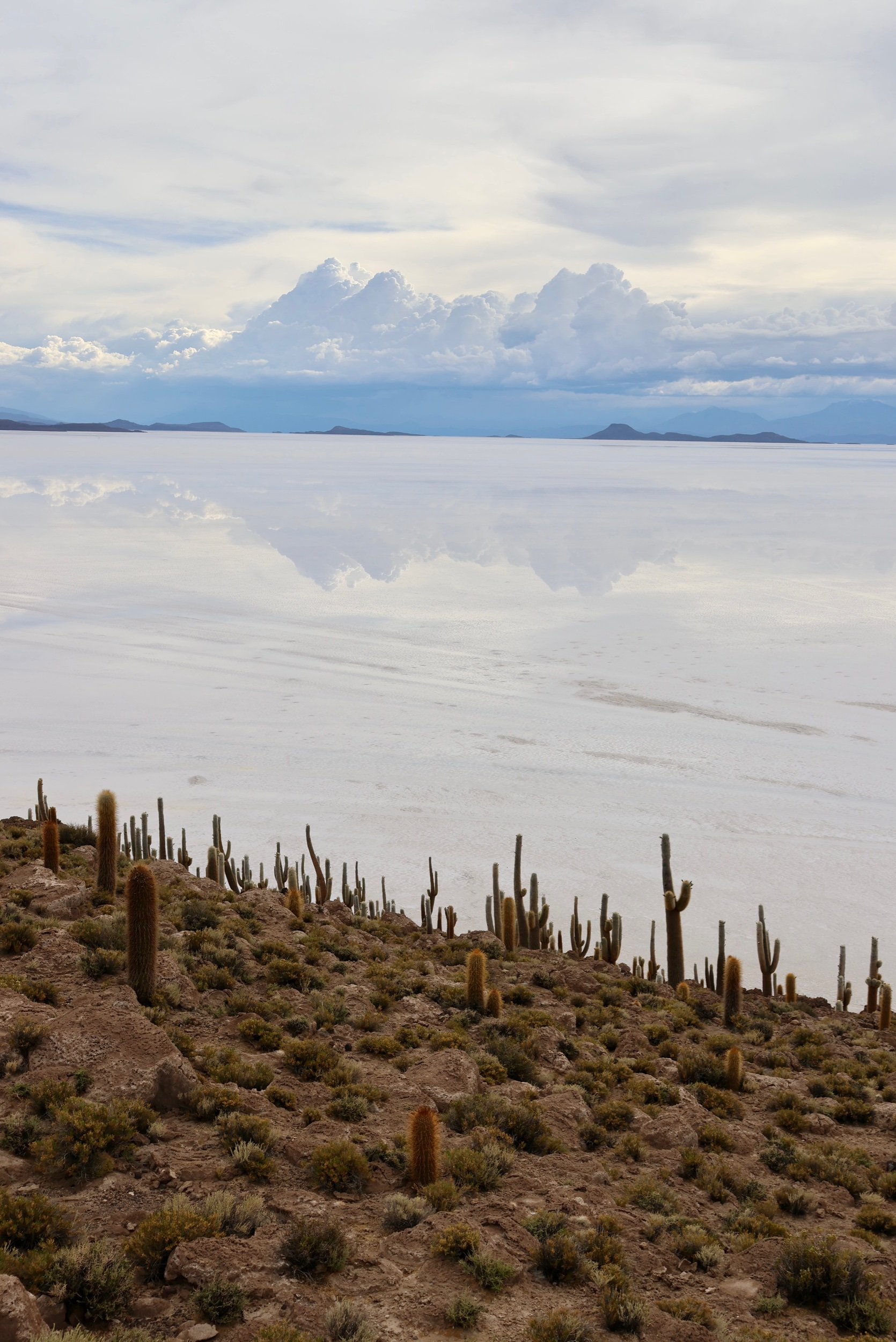
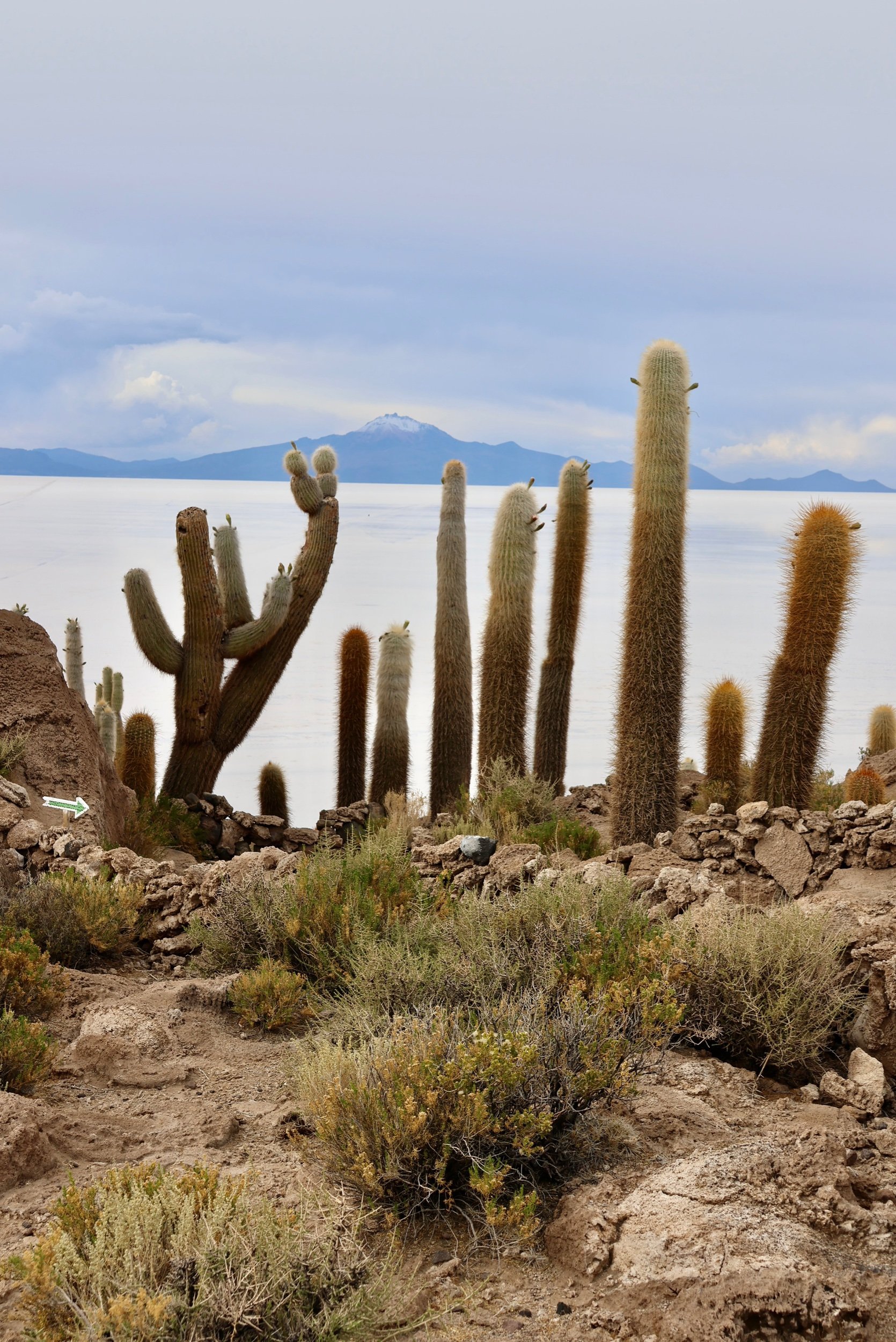

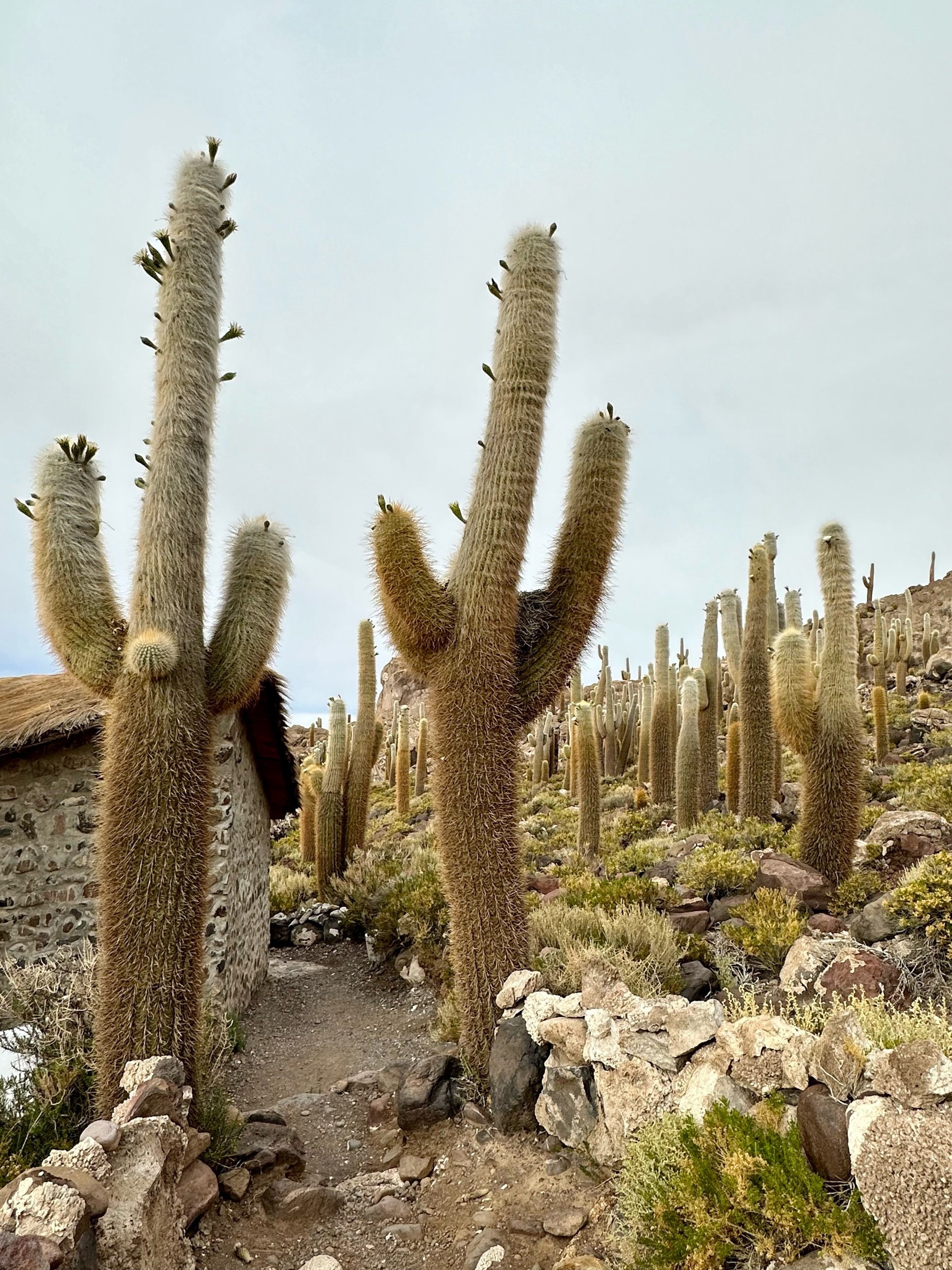
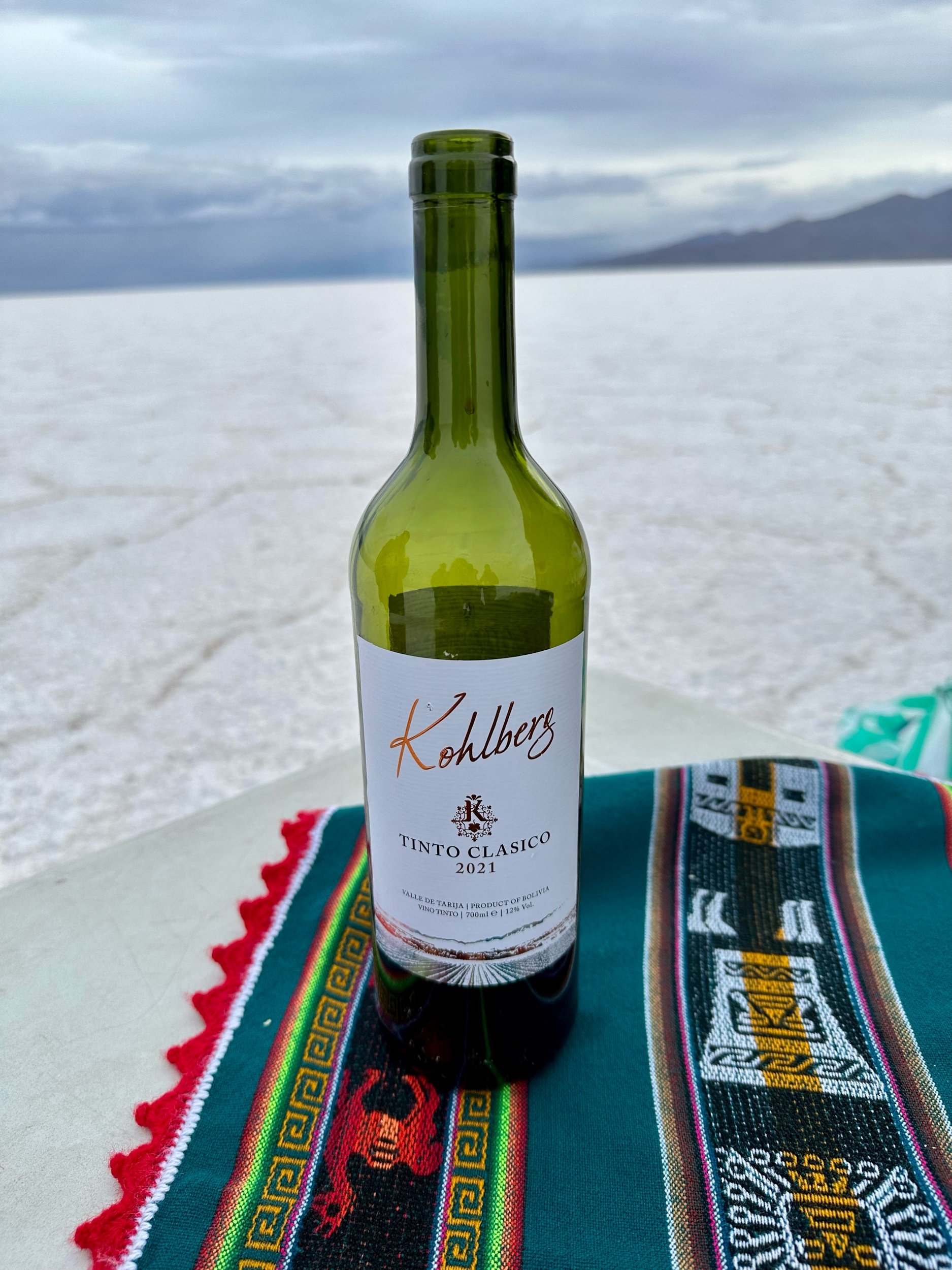
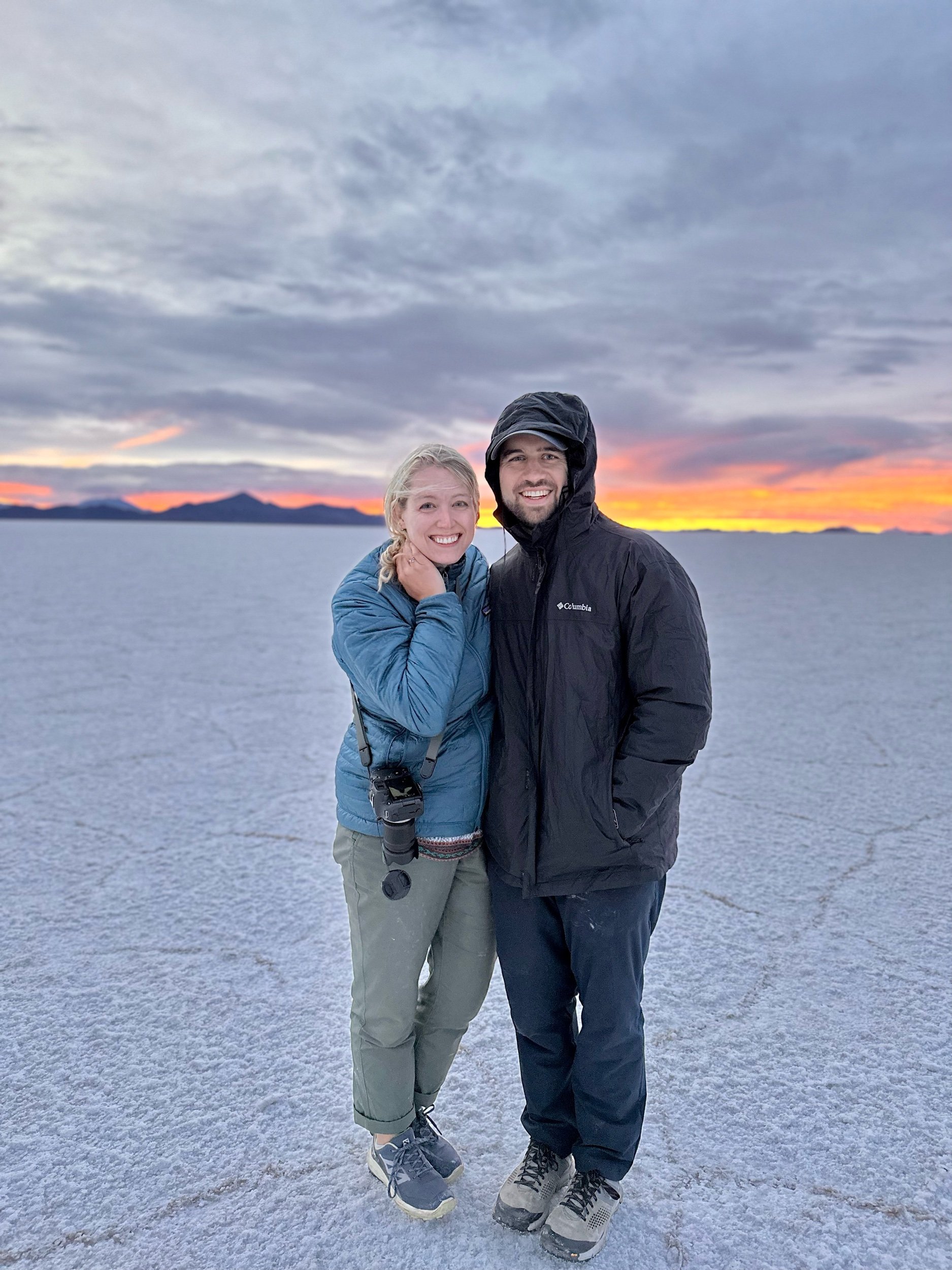
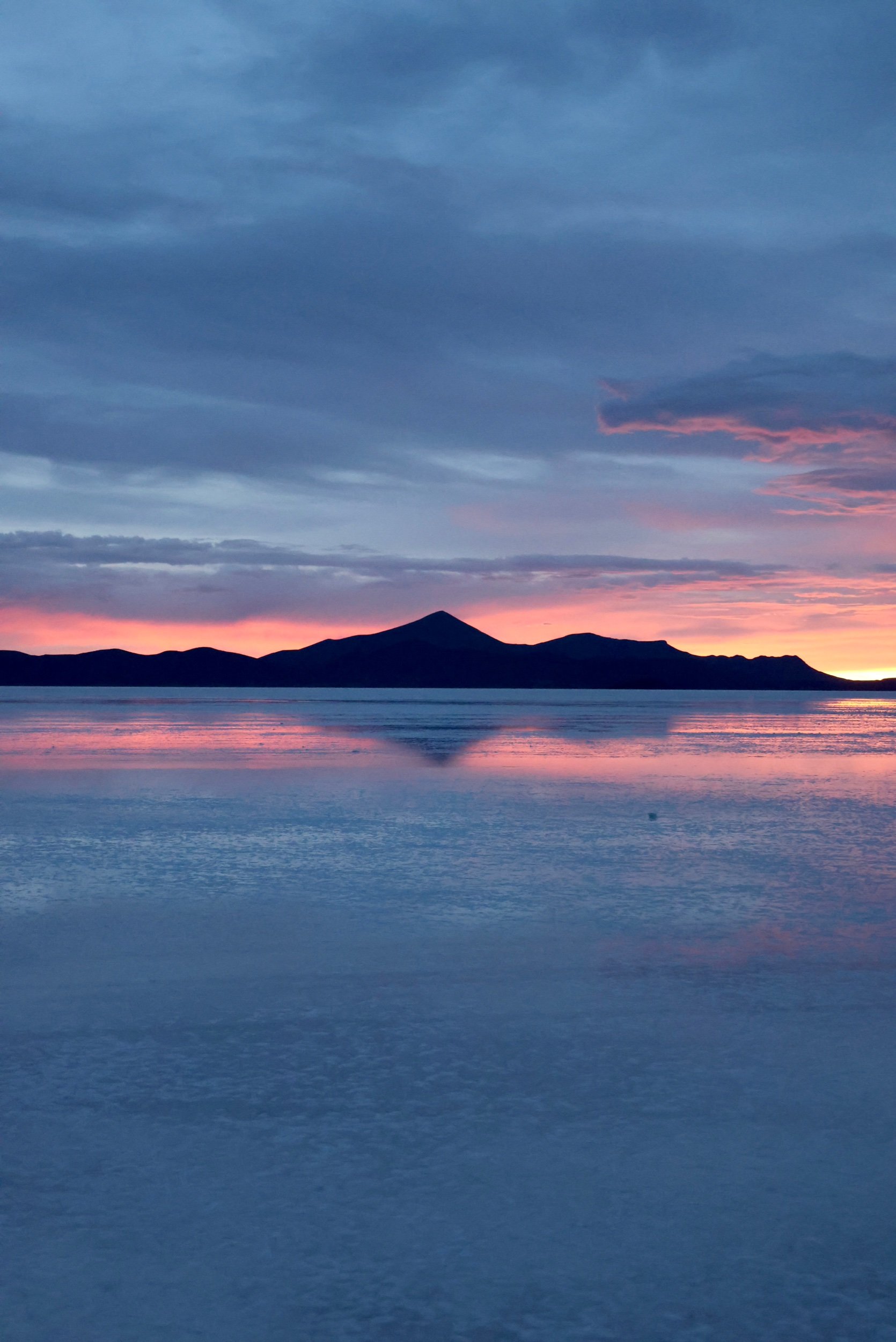
After seeing all that the salt had to offer we were excited to spend our next day seeing what other landscapes there were around the Salar. Our first stop was the Chiguana salt flat which yes, was another salt flat, but was pretty small and surrounded by volcanoes. On the way, we saw some quinoa farms and learned how they harvest the seeds. We also saw wild ostriches, wild vicuñas (a local member of the llama family), and domesticated llamas! Near the volcanoes were landscapes full of petrified lava flows with really strange and unique rock formations.
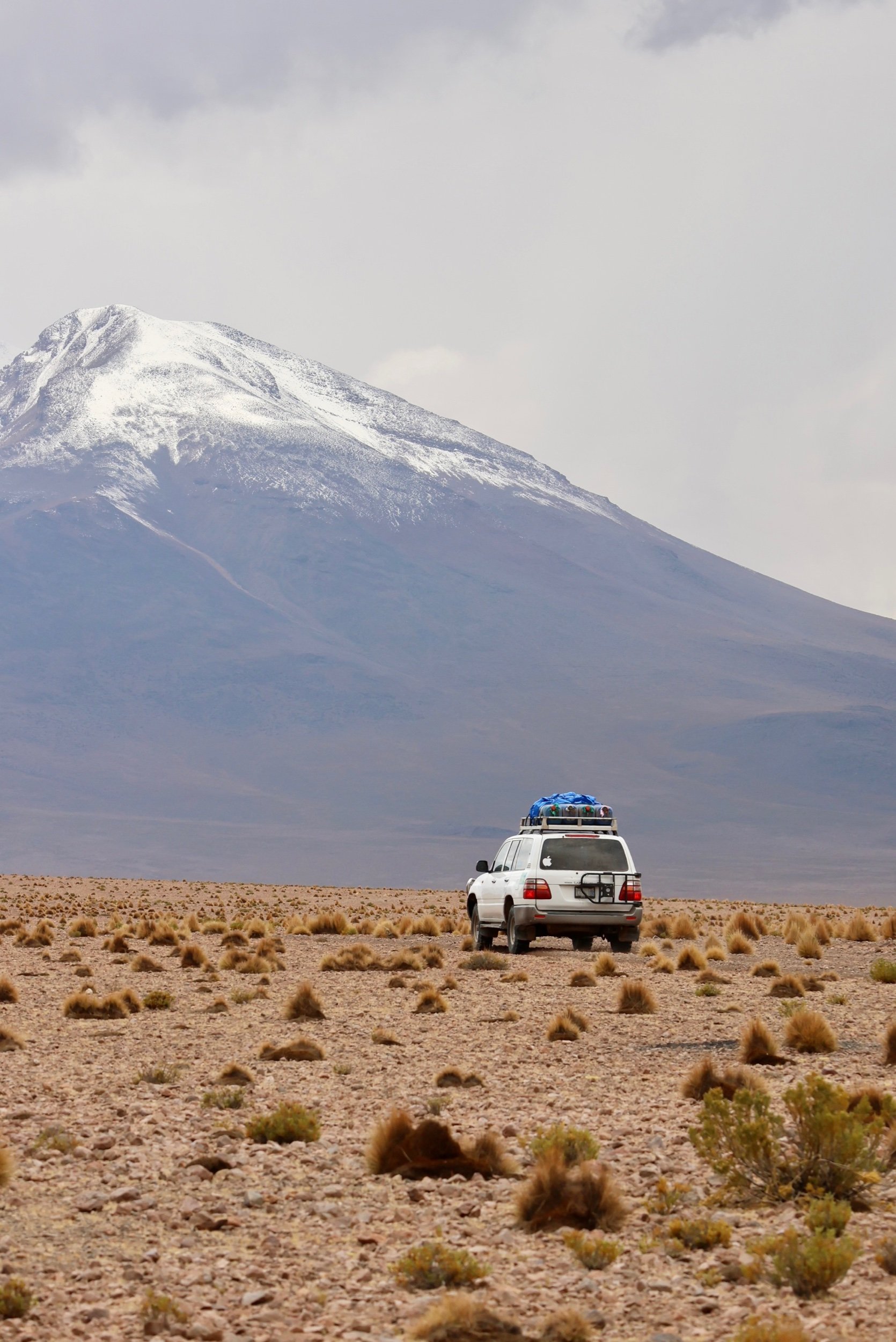

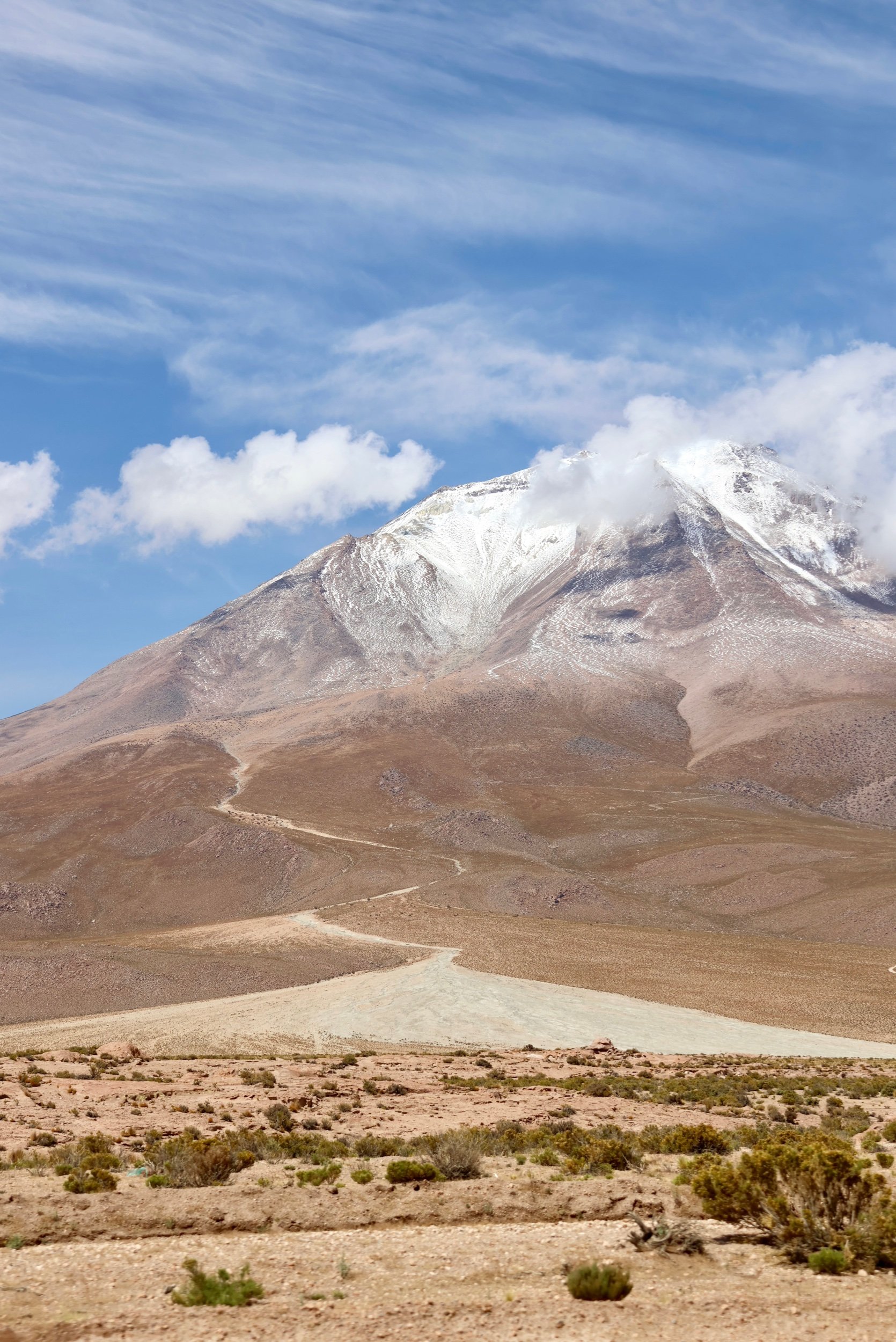
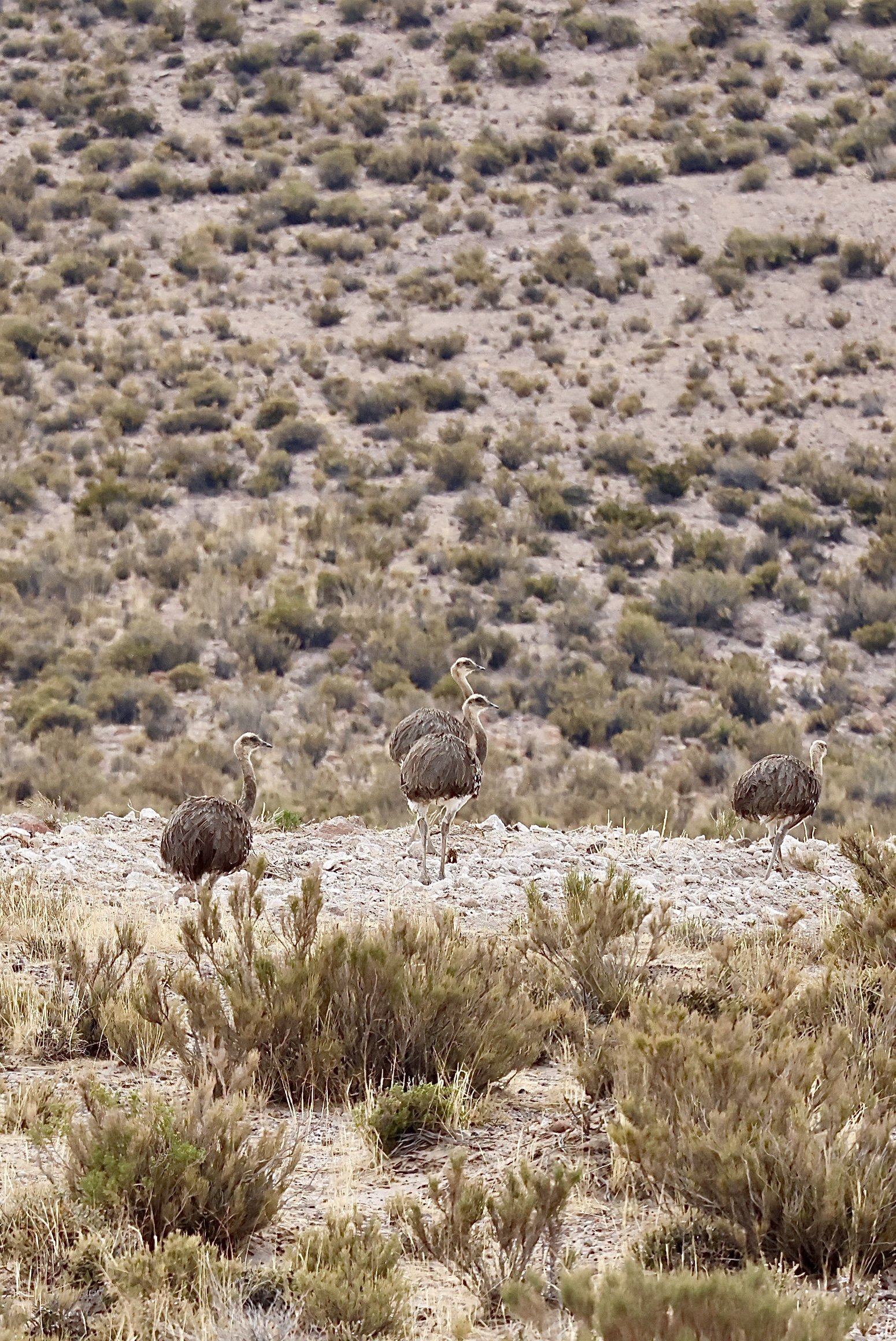
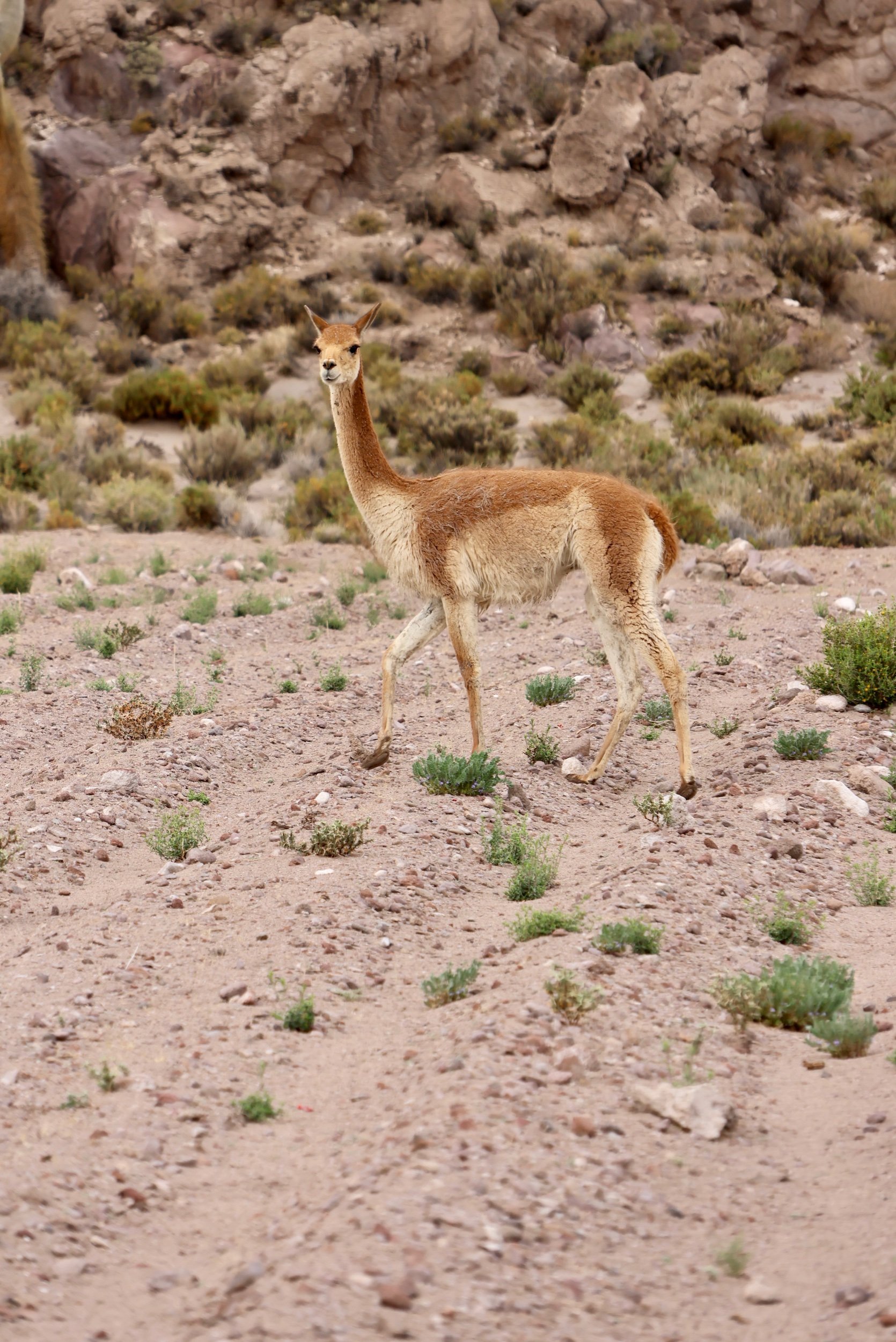

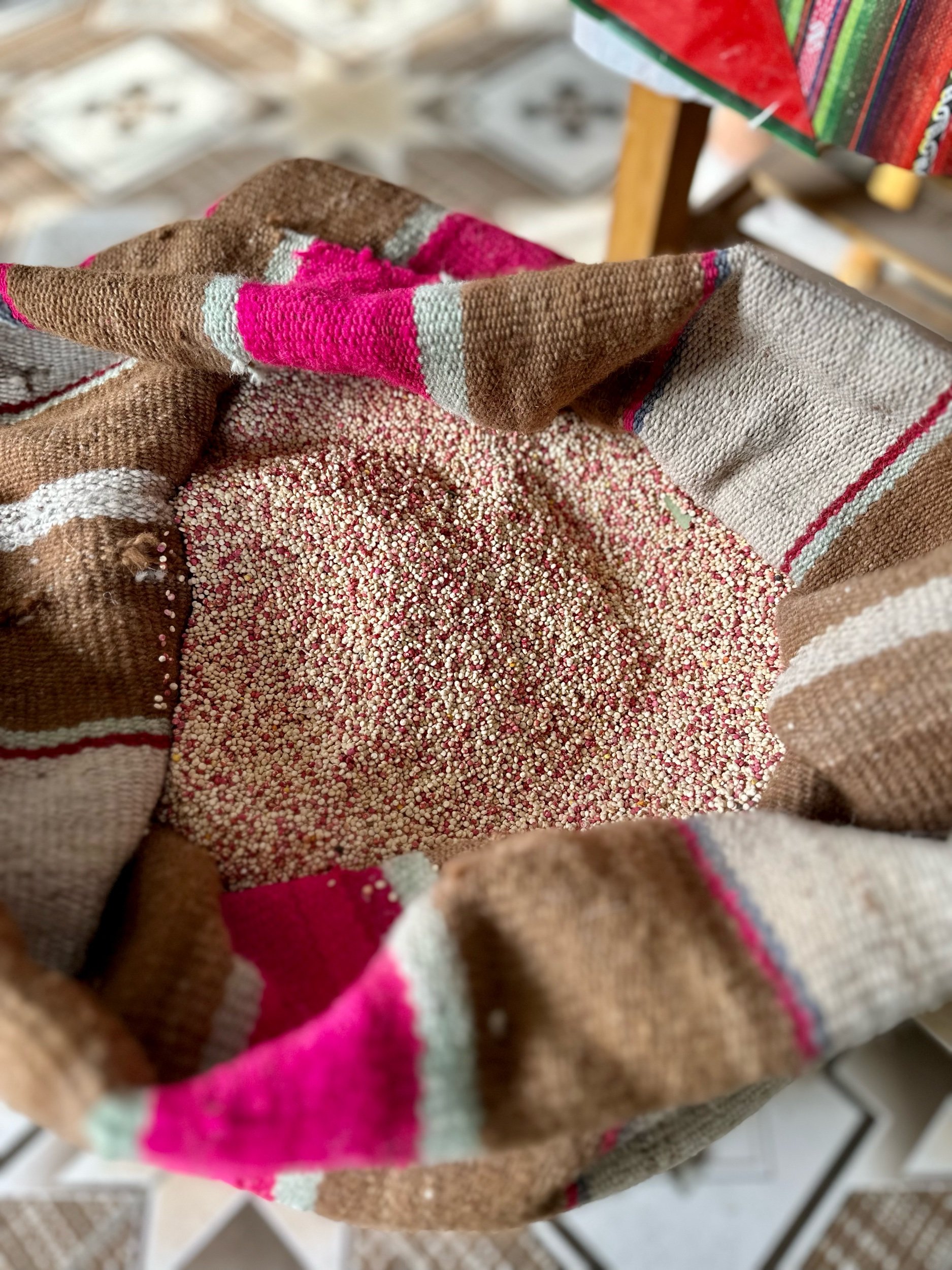

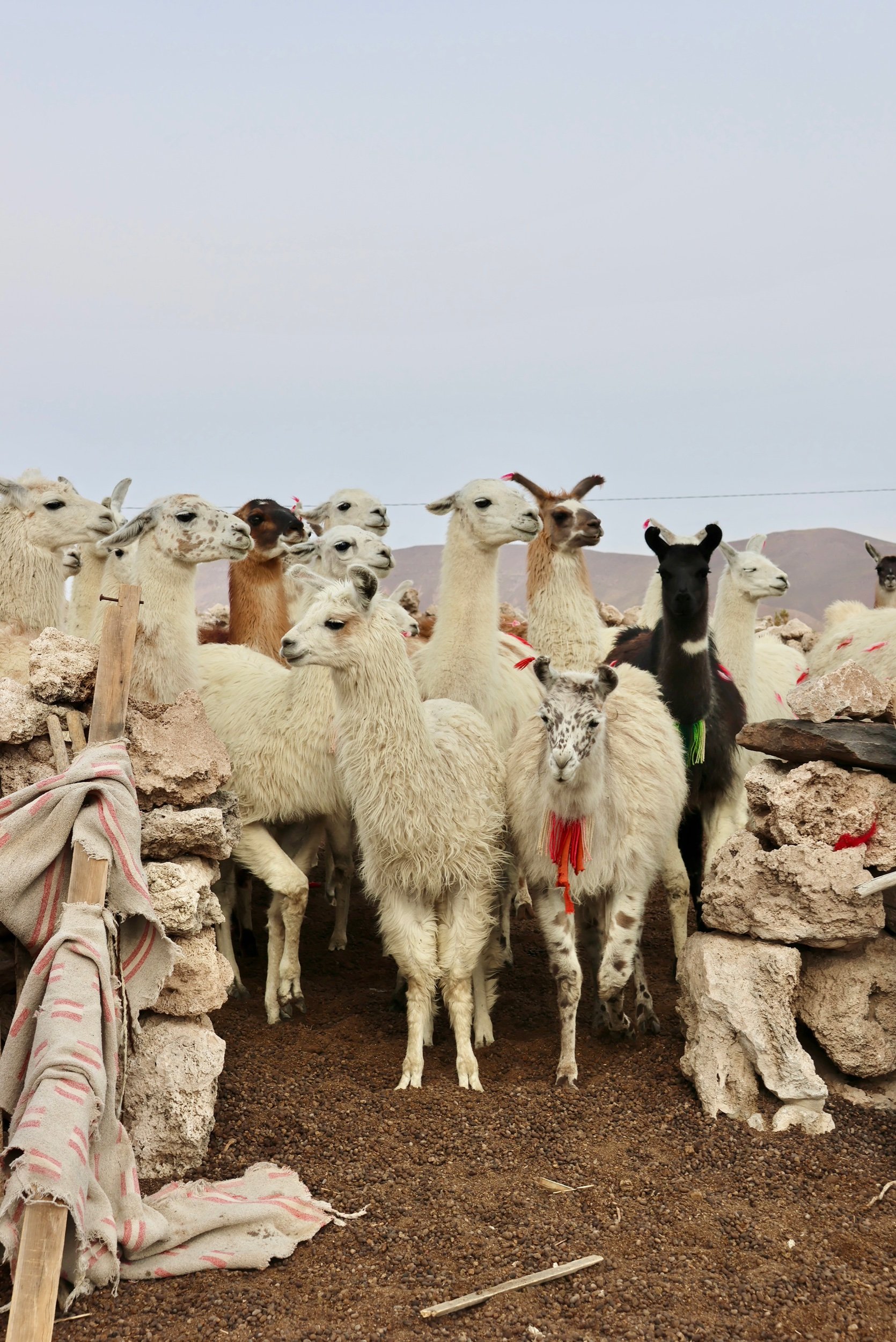
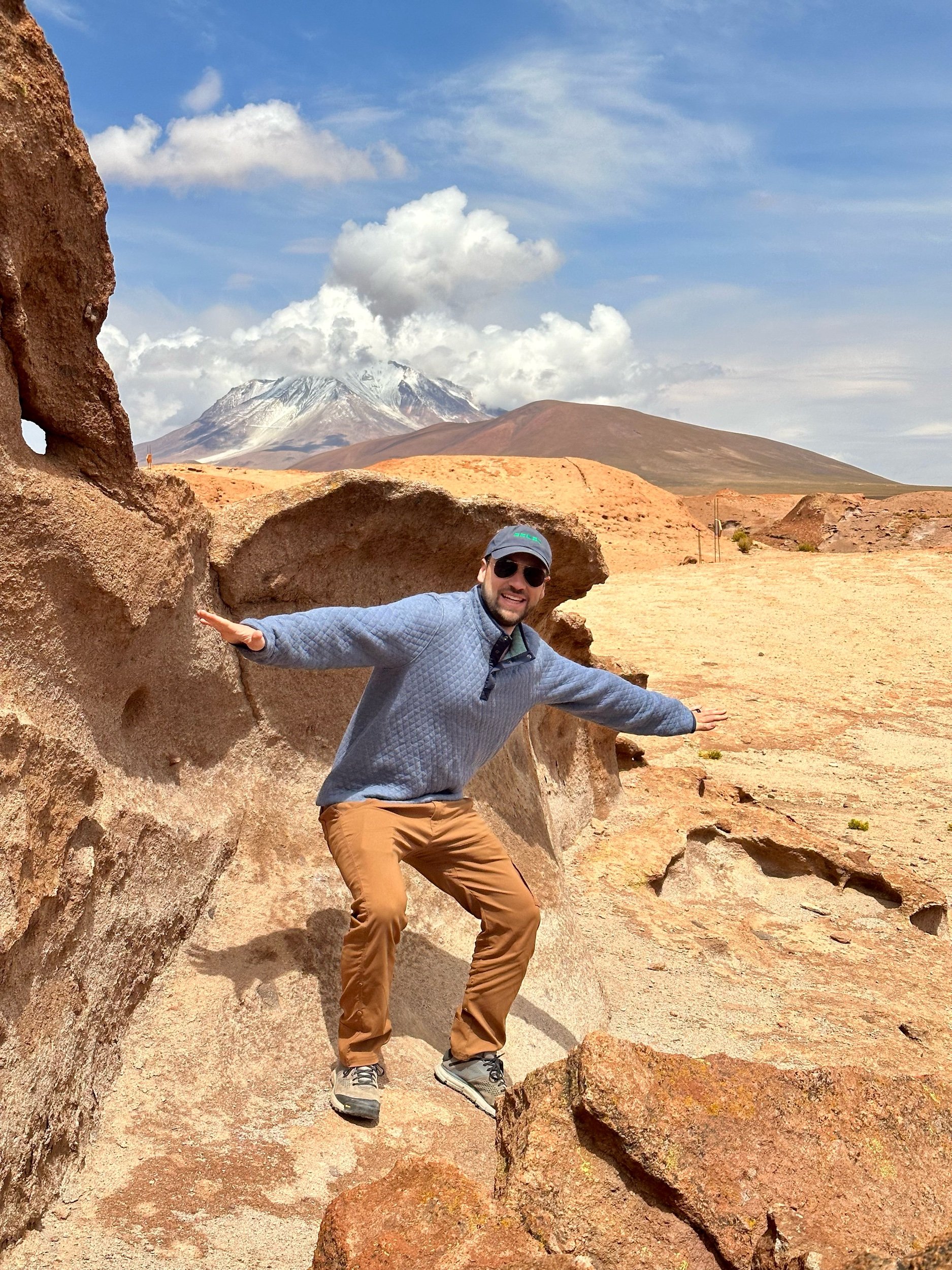
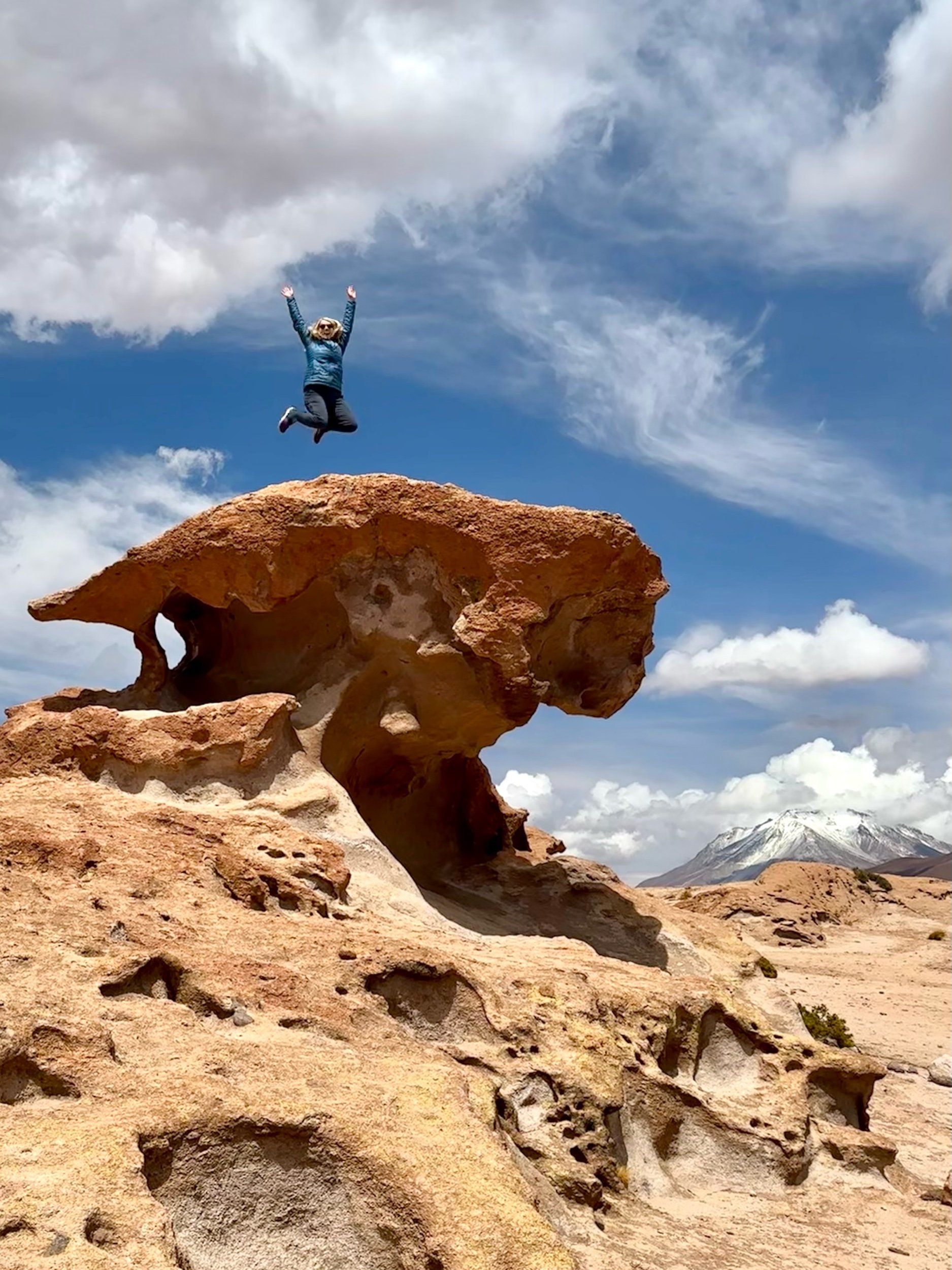

Our next stops were some high plain lagoons with flamingos!! The lagoons form from rain runoff and snowmelt from the surrounding mountains so aren't very deep and have nowhere to drain. This runoff from the mountains provides the lagoons with plenty of nutrients so there is an ecosystem of microorganisms for the flamingoes to eat. With the lagoons being so flat and shallow across the whole lake you can see flamingoes standing anywhere on the water which really messes with your perception at first. This also means the flamingos don't have to stay near the shore where the predators are. Around the lagoons we were lucky enough to see some local wildlife like more vicuñas, a fox (Tio!!), and a viscacha (a desert rabbit).

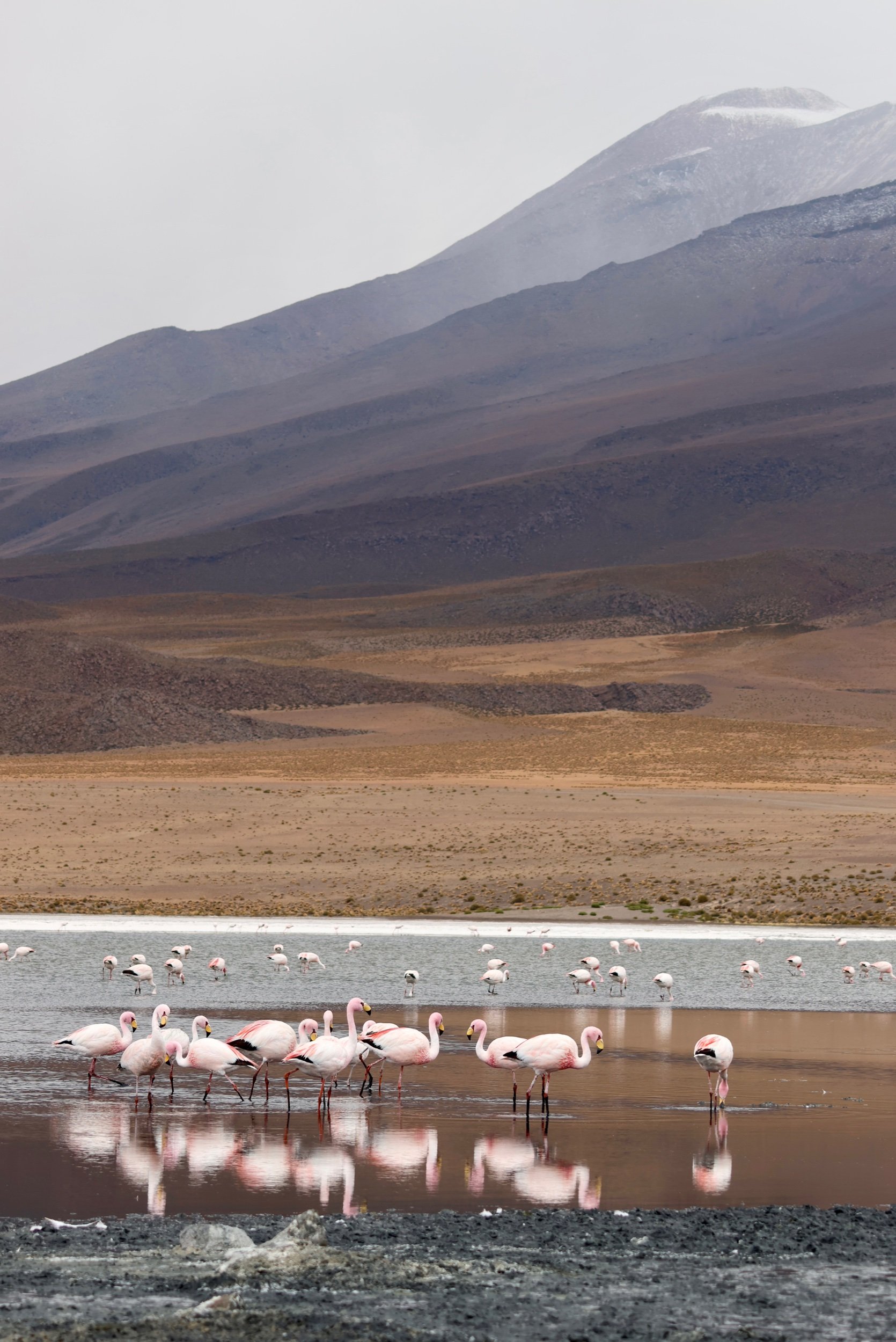
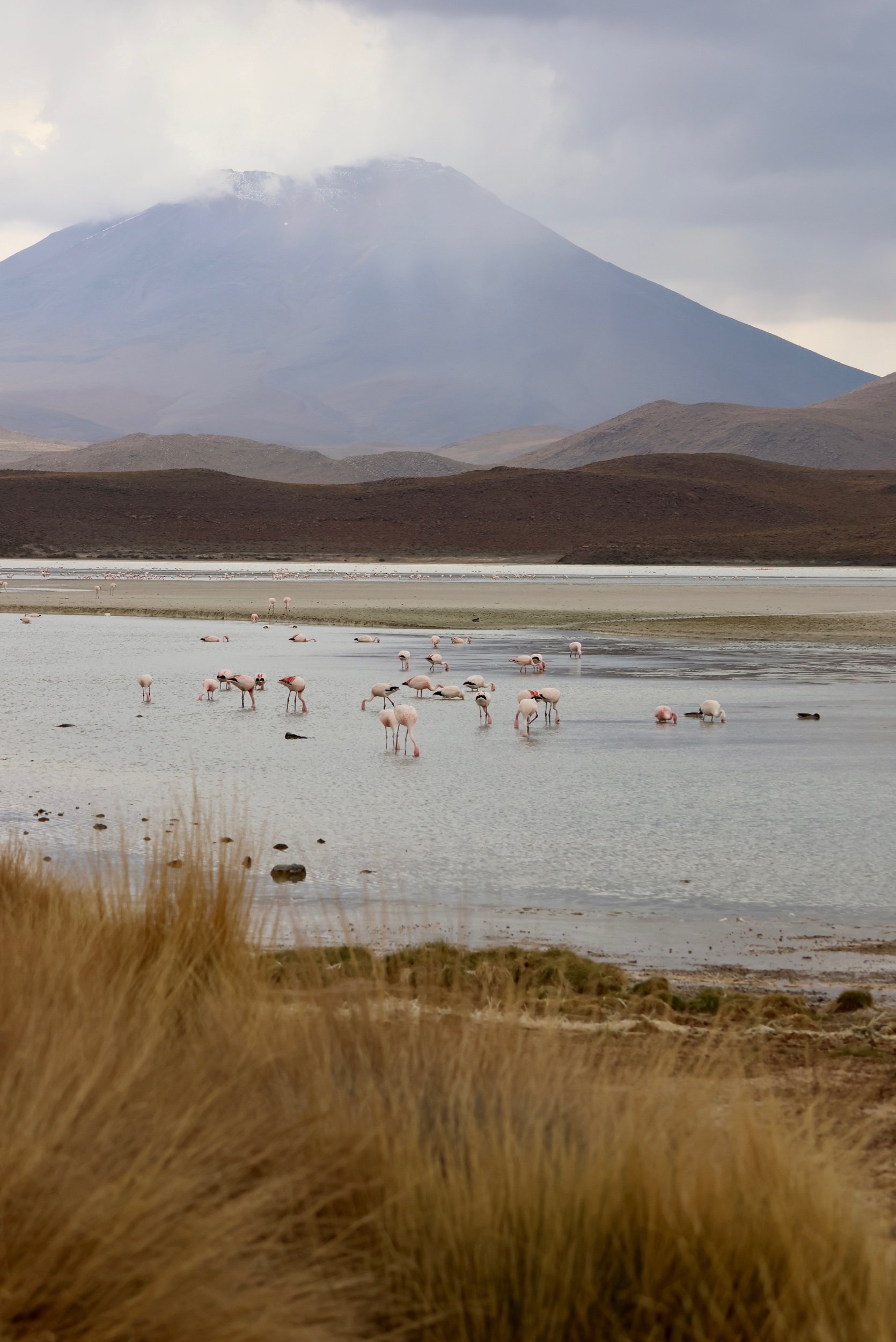

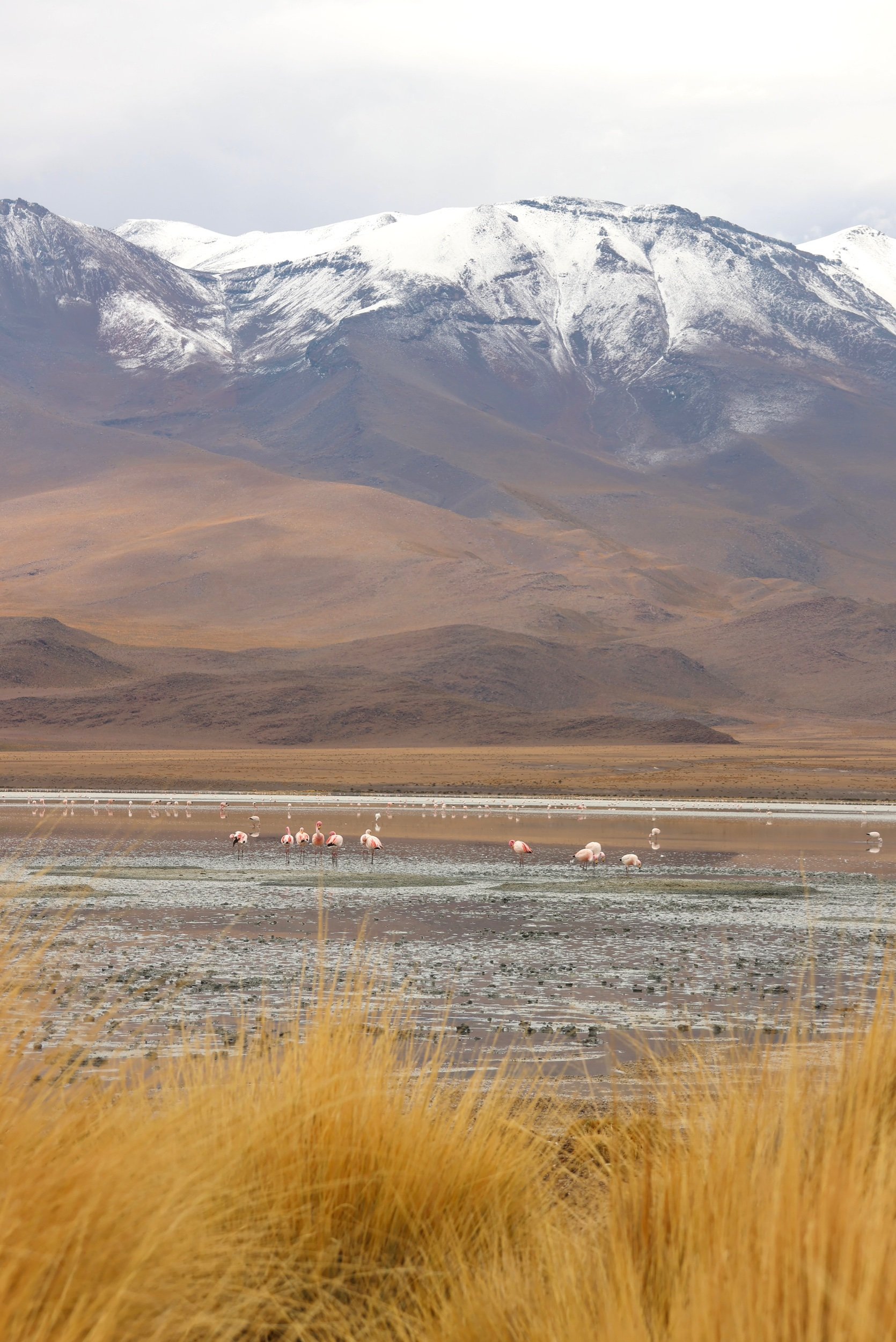

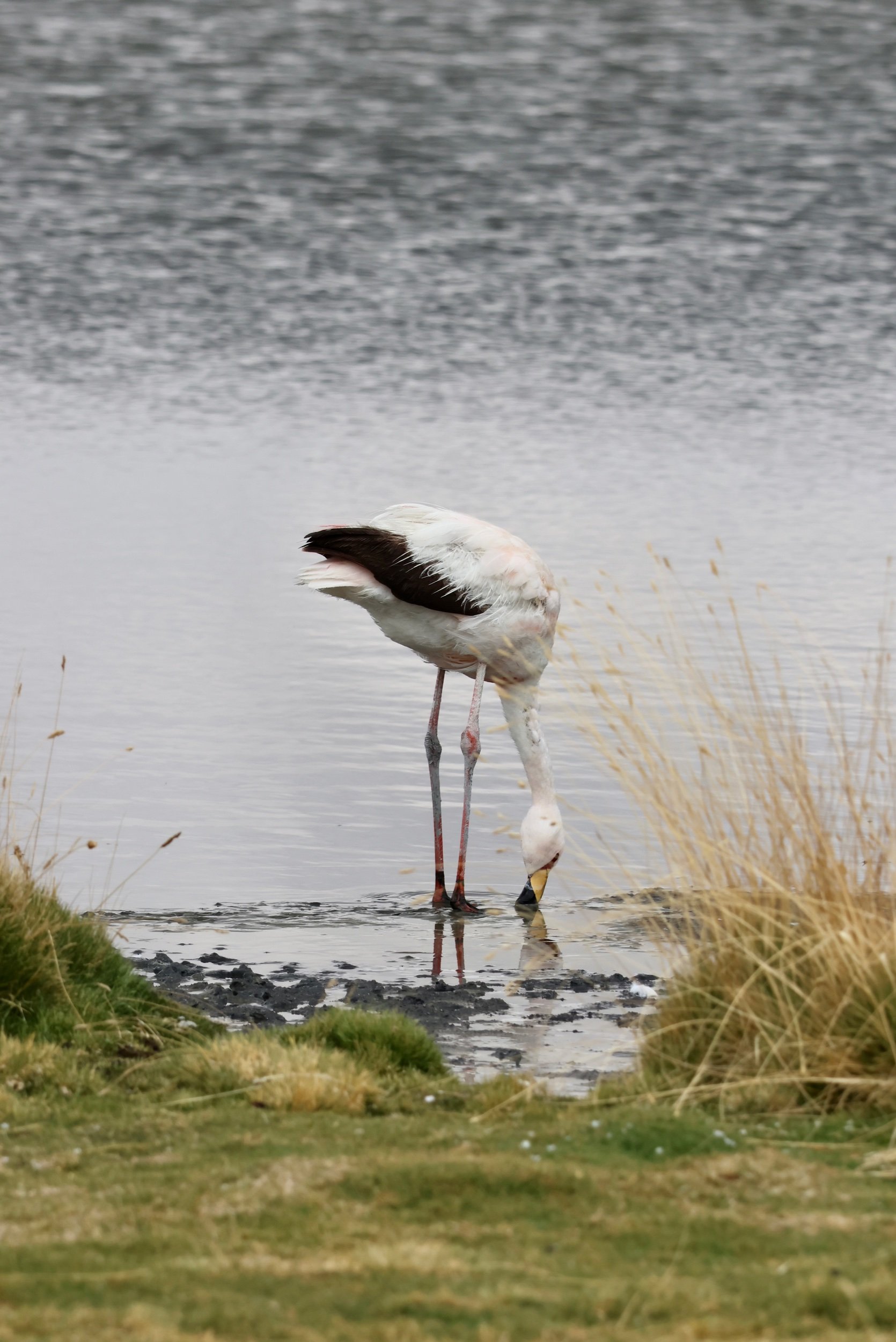
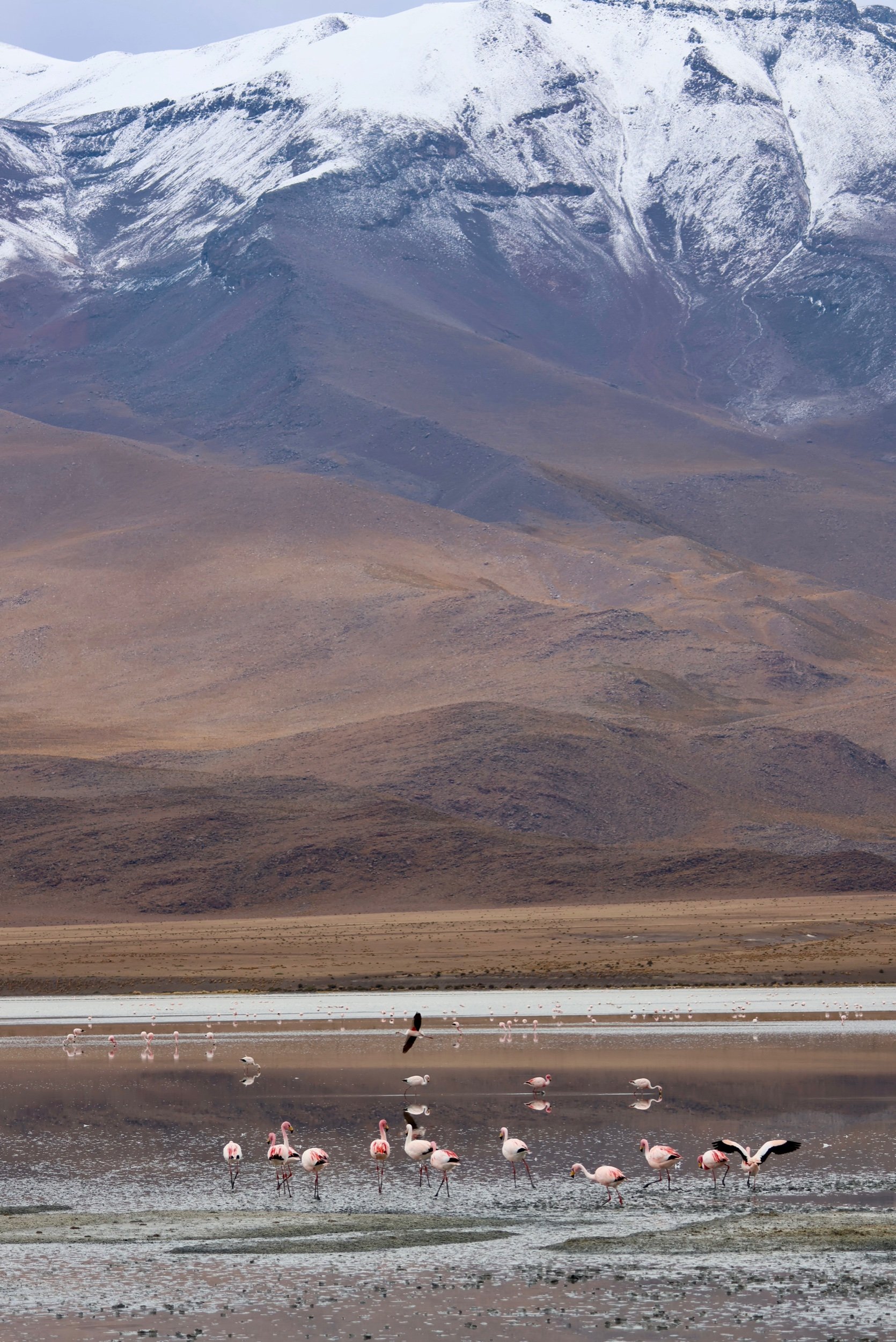
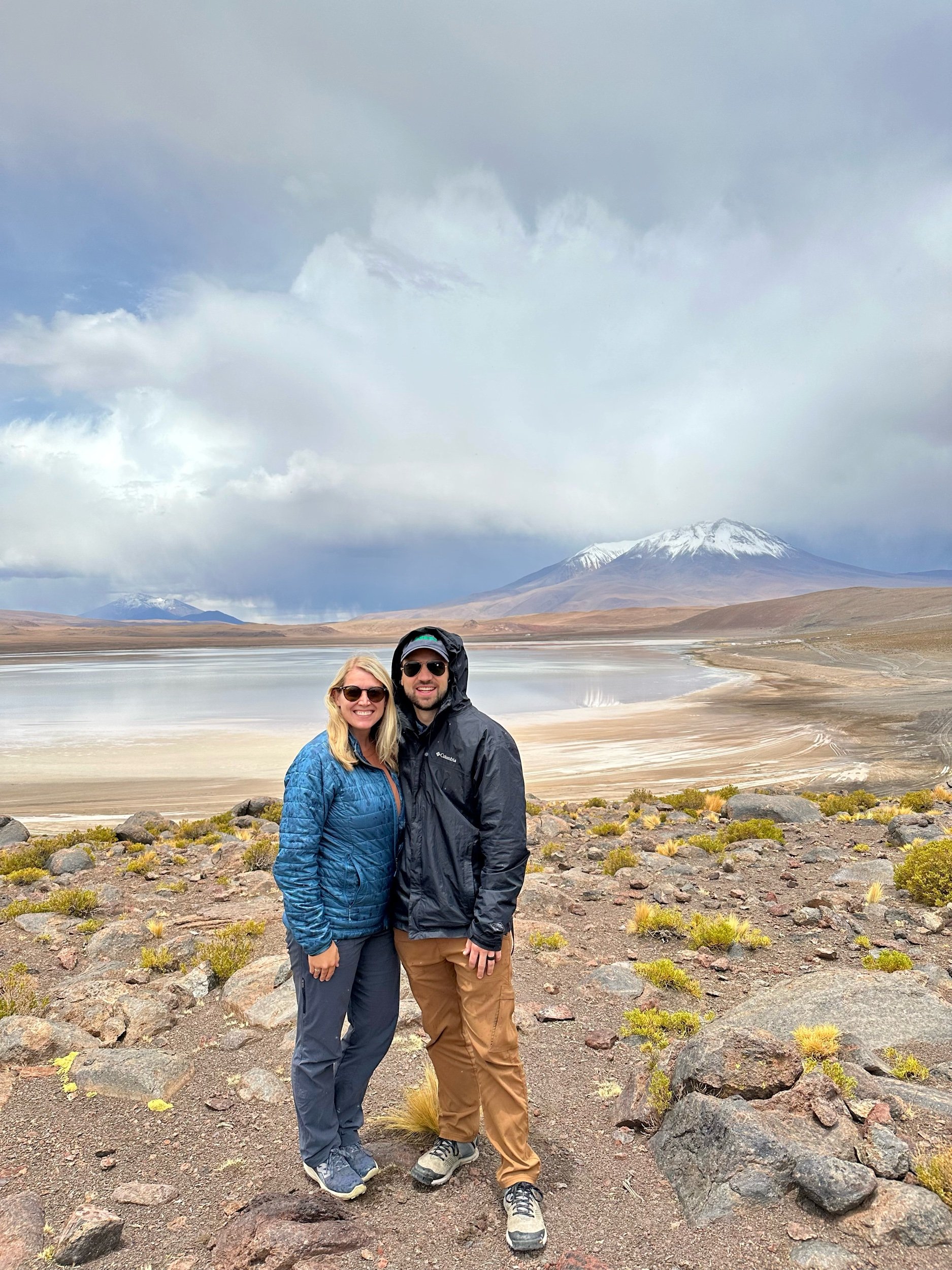
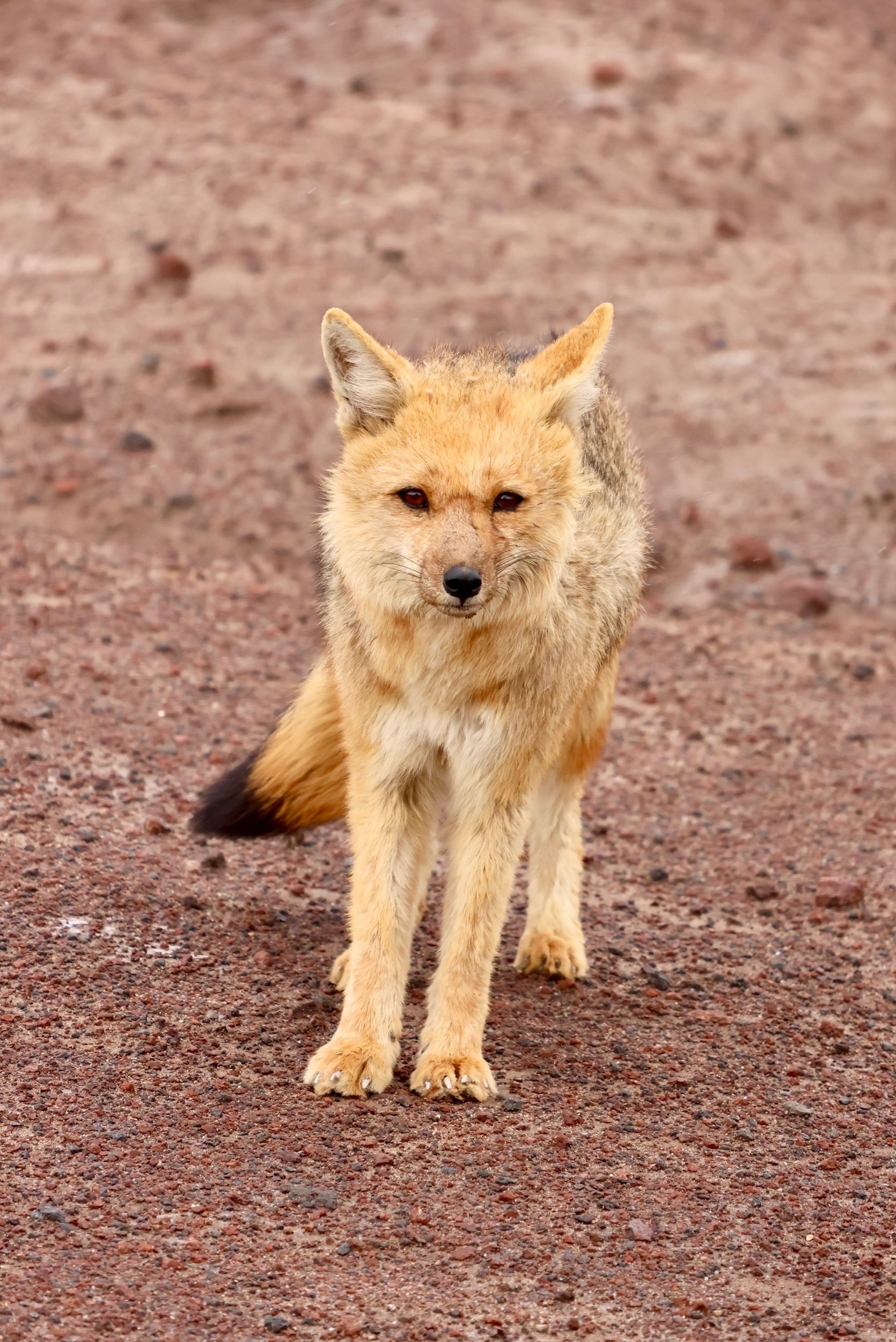
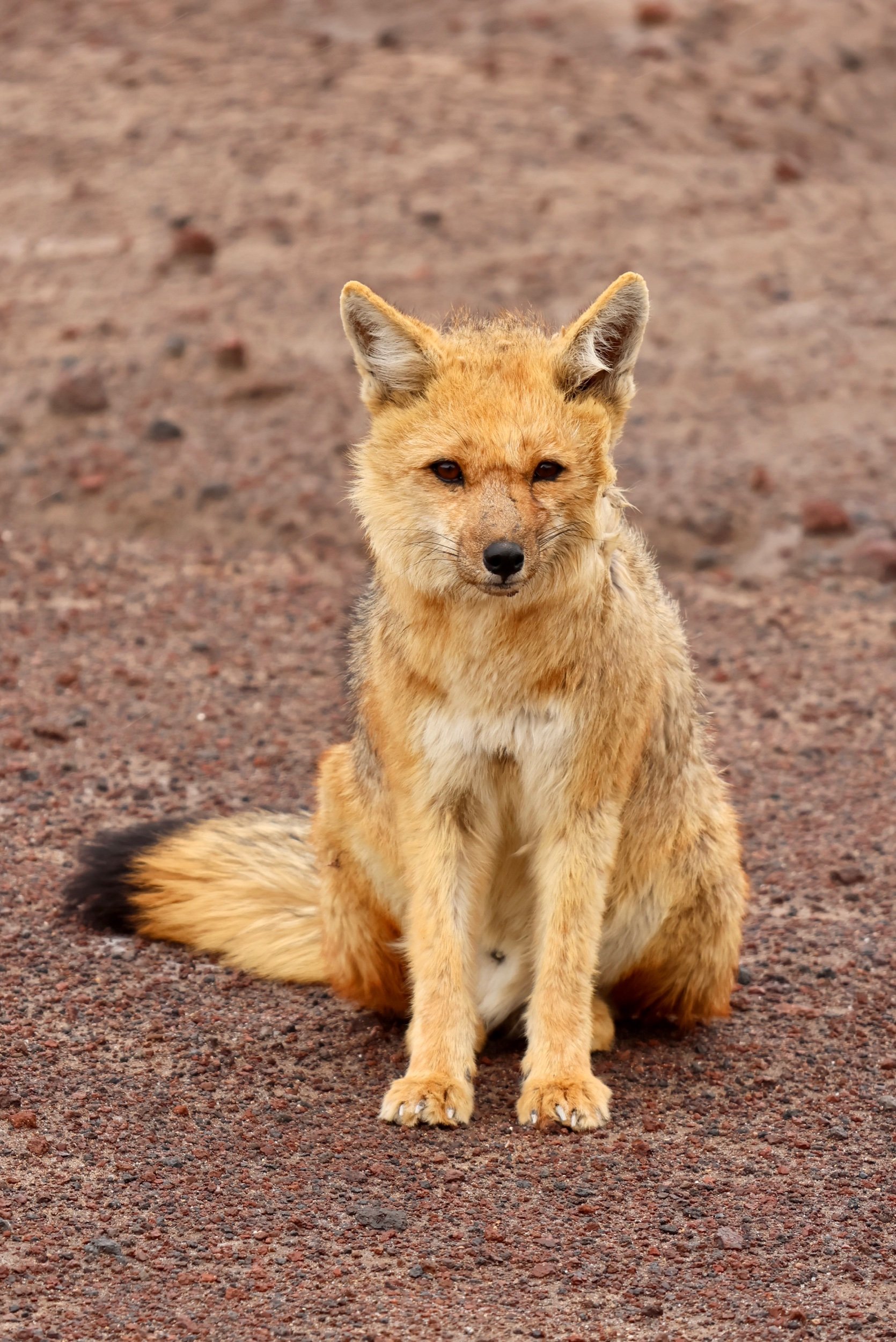
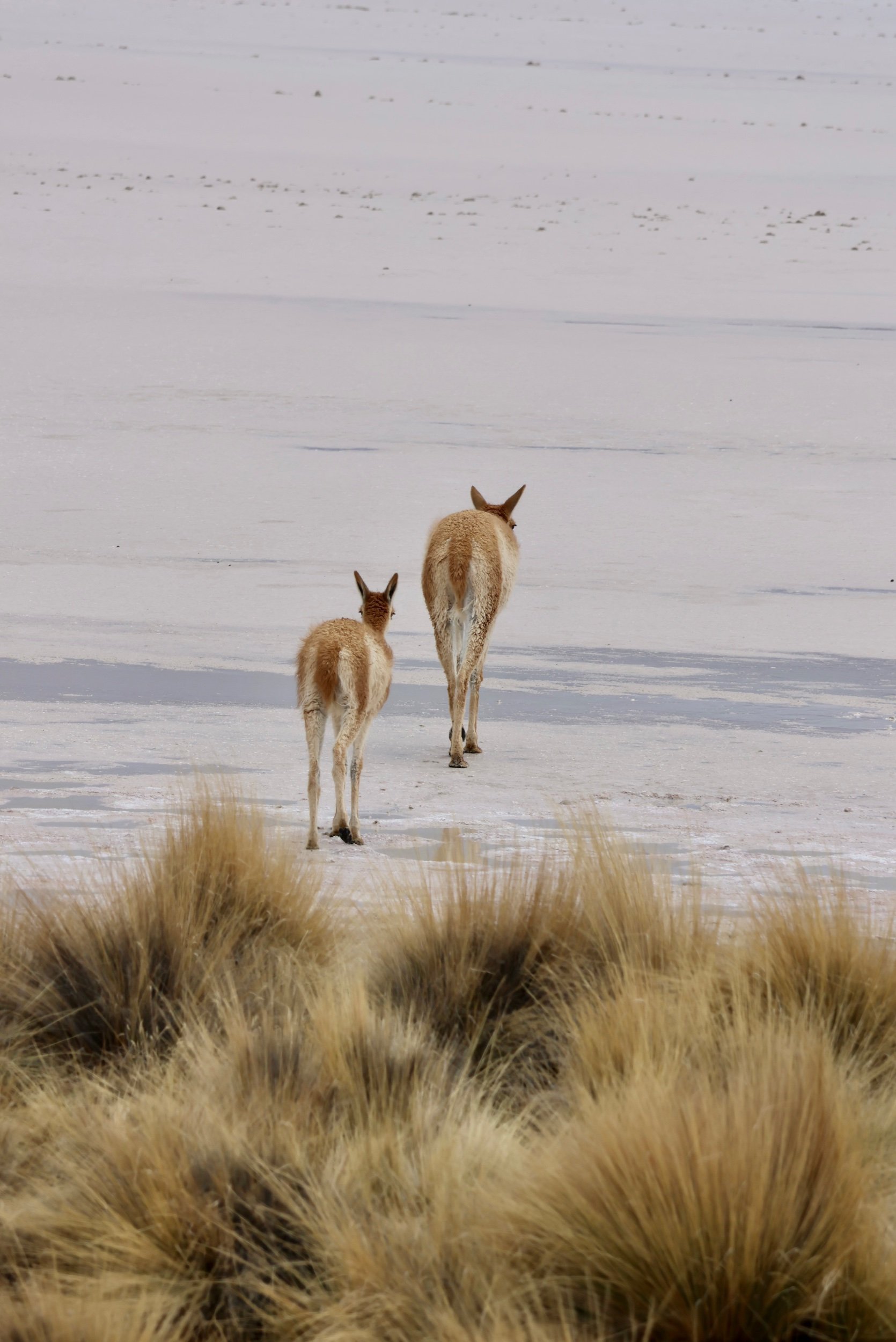


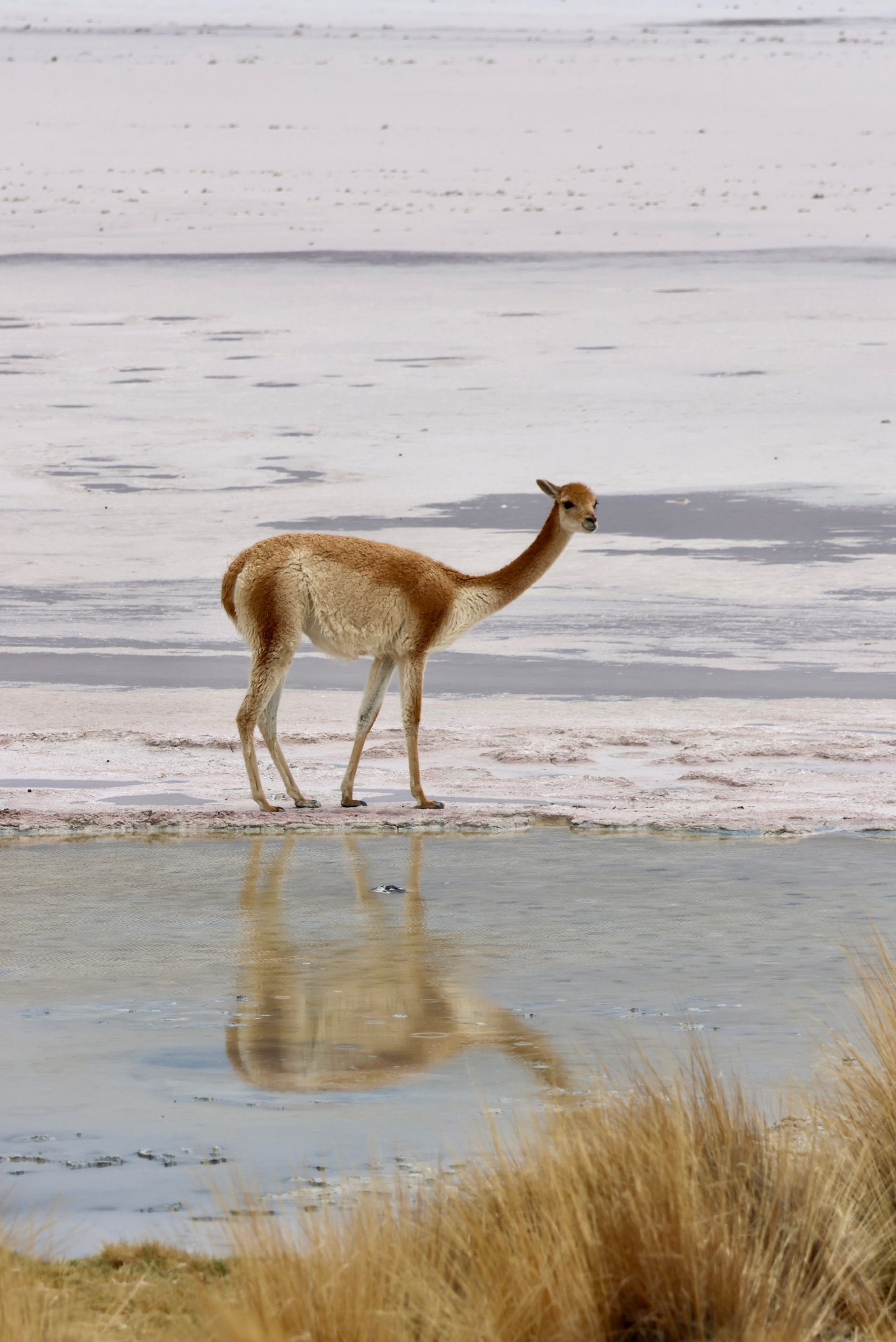
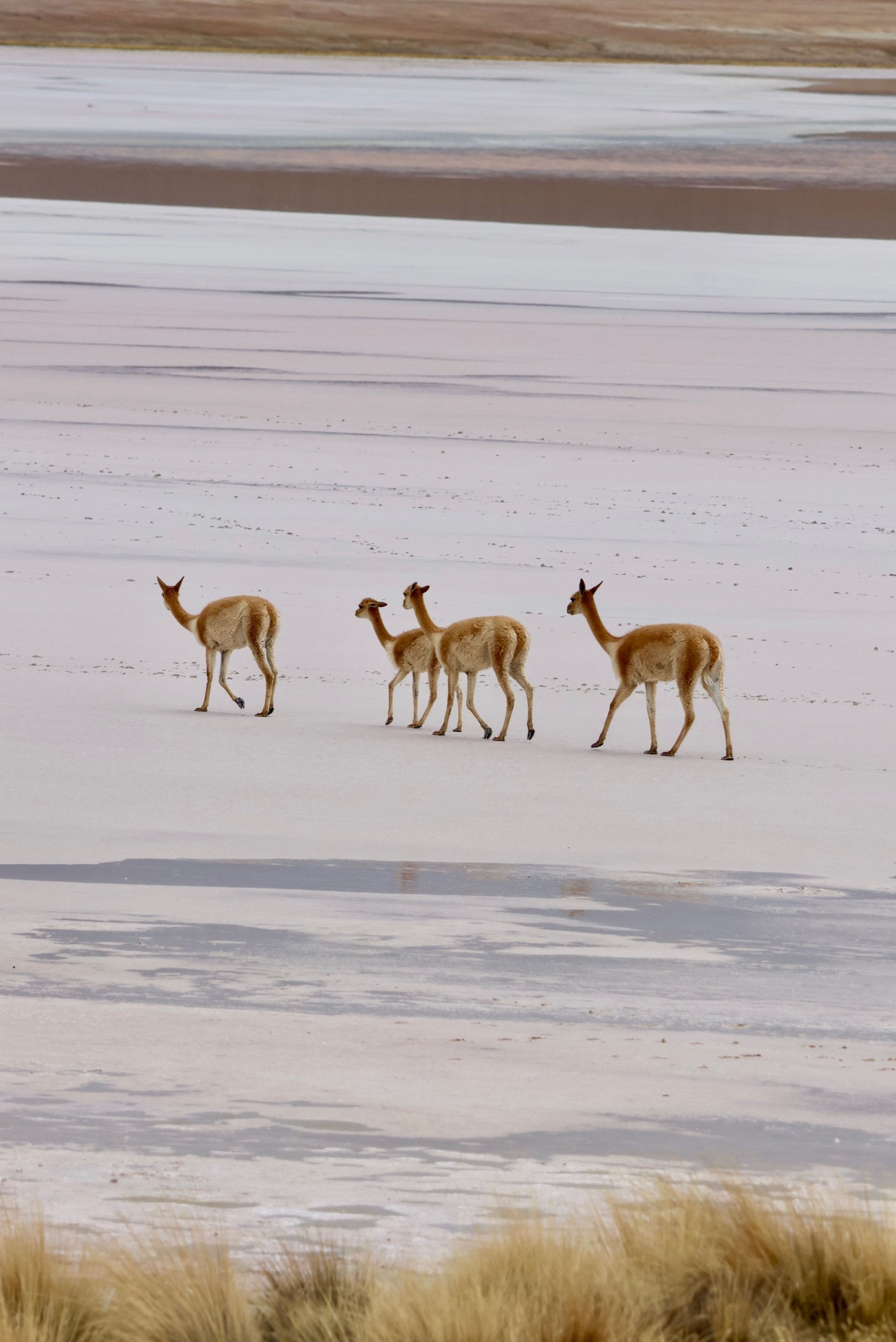

We left the lagoons and flamingos behind to head even higher into the mountains. We went through the Siloli Desert which at 4550m/15000ft is the highest desert in the world. In the desert, there are these weird rock formations that were deposited on the desert by glaciers and/or rockslides and have been slowly eroded by the wind overtime, one looks like a tree!
The region has a ton of microclimates due to the elevation and positioning of the mountains so as we left the desert it started raining on and off. On our drive, we saw mountains that were colored with different shades of red and orange from the minerals located in the rocks. This region has a ton of copper, lithium, and other precious metals but luckily it is protected because of the delicate ecosystem of the Salt Flats.
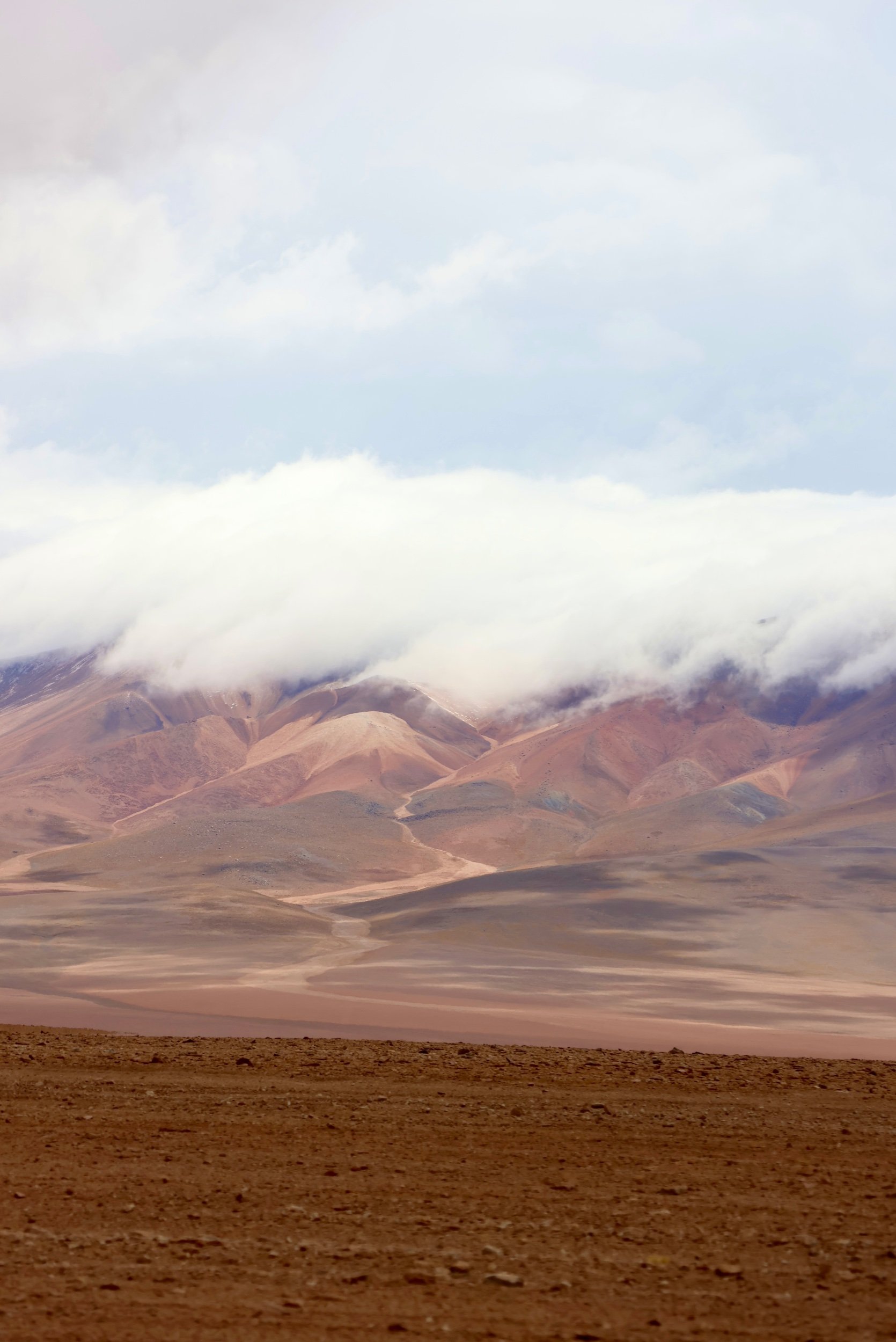
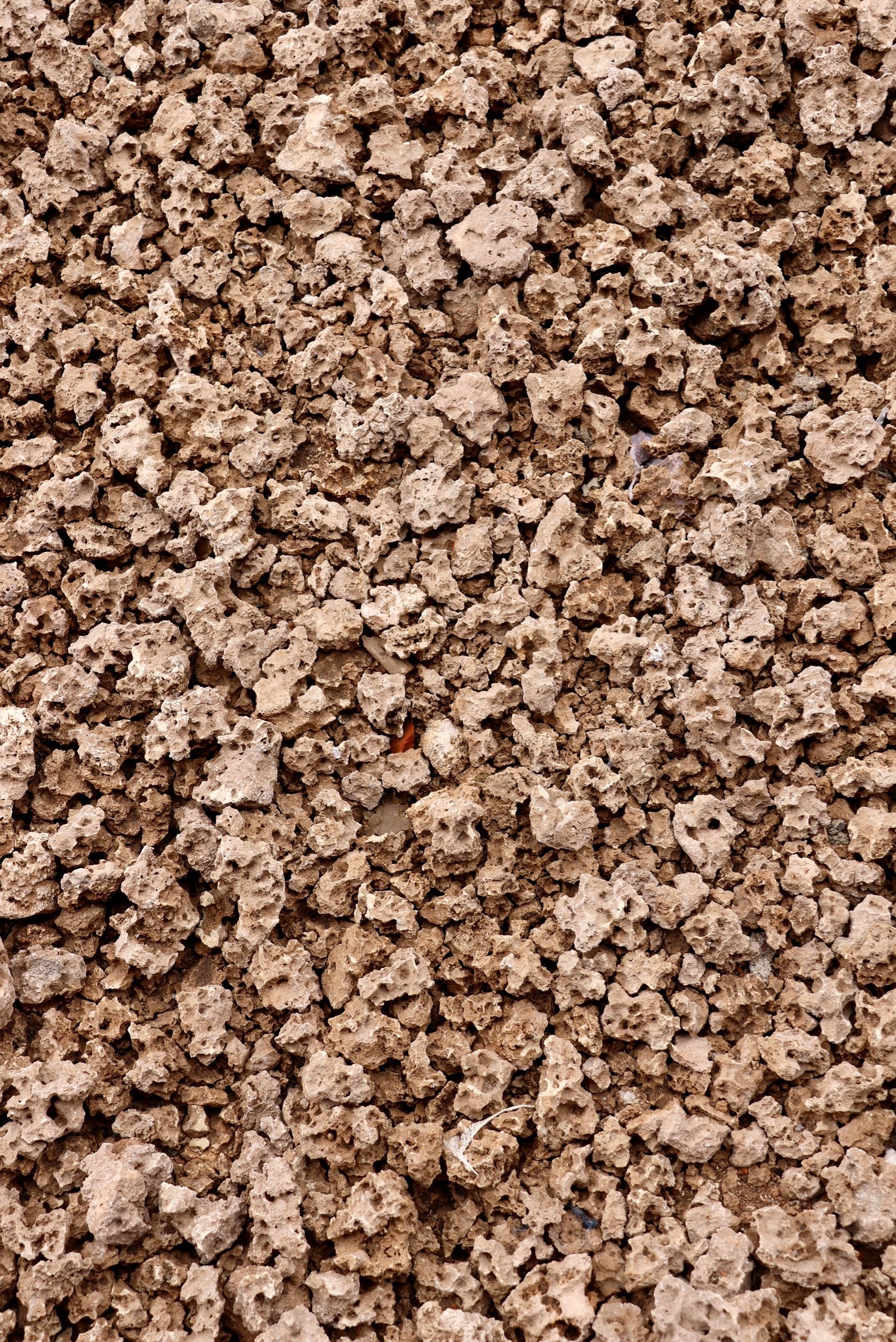
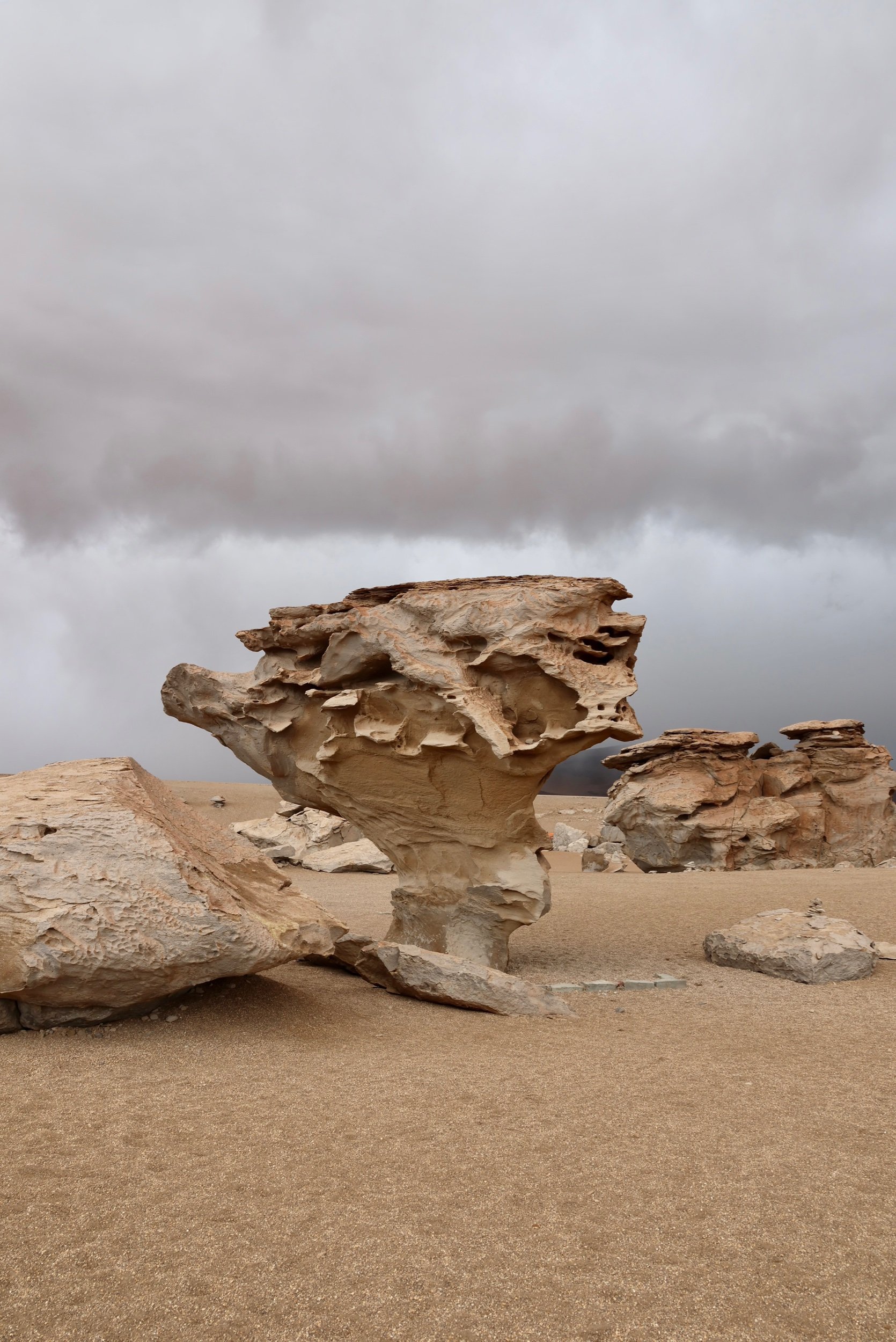
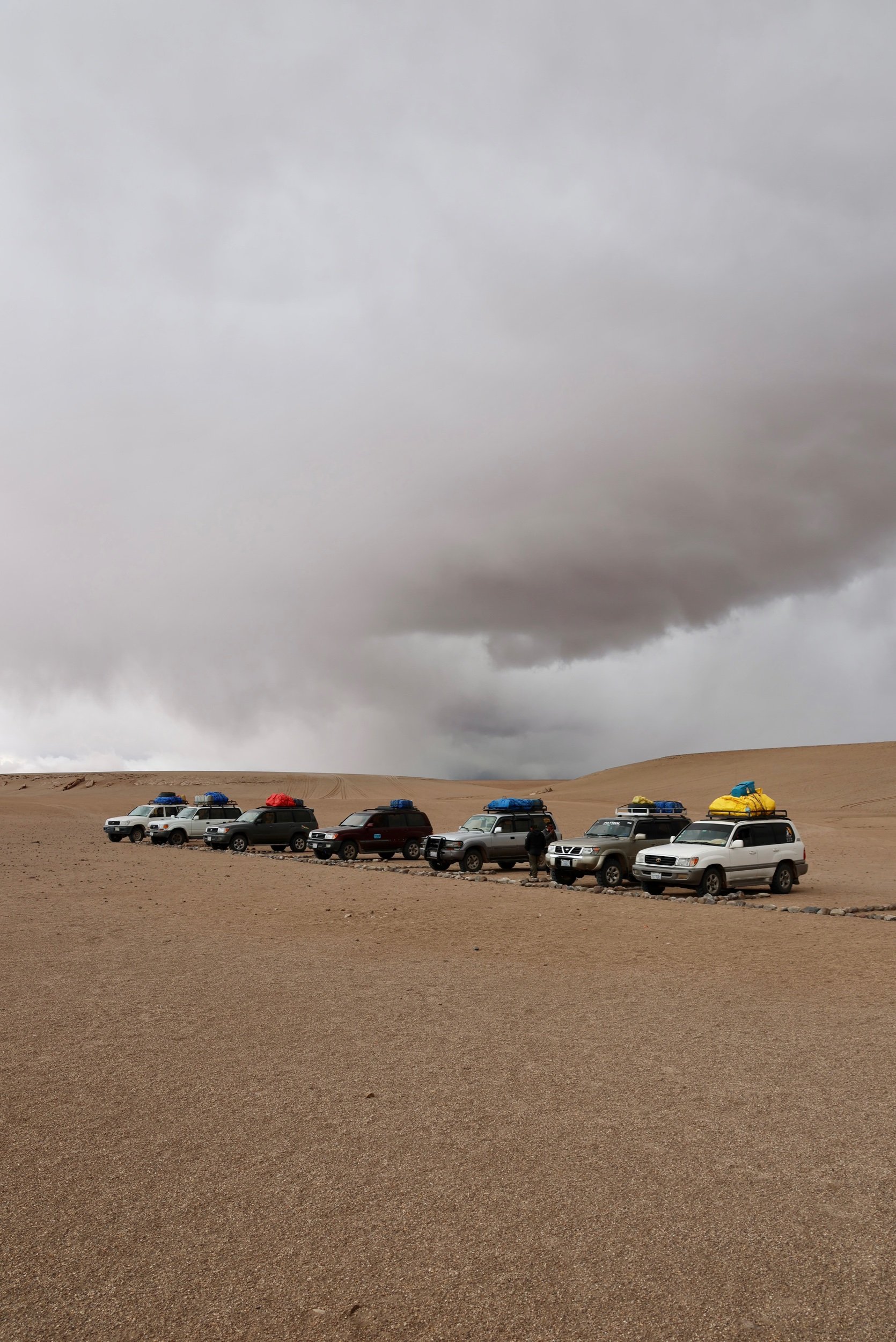
We ended our day in the Eduardo Avoroa National Andean Faune Reservation, a protected area containing lakes, rivers, mountains, volcanos, geysers, hot springs, and plenty of unique wildlife suited to this region. The largest lake is called Laguna Colorado which is home to more flamingoes and has a reddish tint to the water from the mineral runoff from the mountains. There were also some llamas and vicuñas near the shore grazing and drinking.
We drove further into the park and saw some huge steam clouds in the distance. These were from the Sol de Mañana geyser fields and mud pits powered by lava from the nearby volcanos. What's even crazier about the geothermal energy is the fields are at 16,000ft of elevation! The smell was awful from all the sulfur and we were able to get way too close to the mud pits which probably was a mistake but it was still really cool. We arrived at our hotel for night 2 which was located right next to the thermal spring baths. The “hotel” had no power or heating but did have running water so after dinner we went to bed for another early morning.
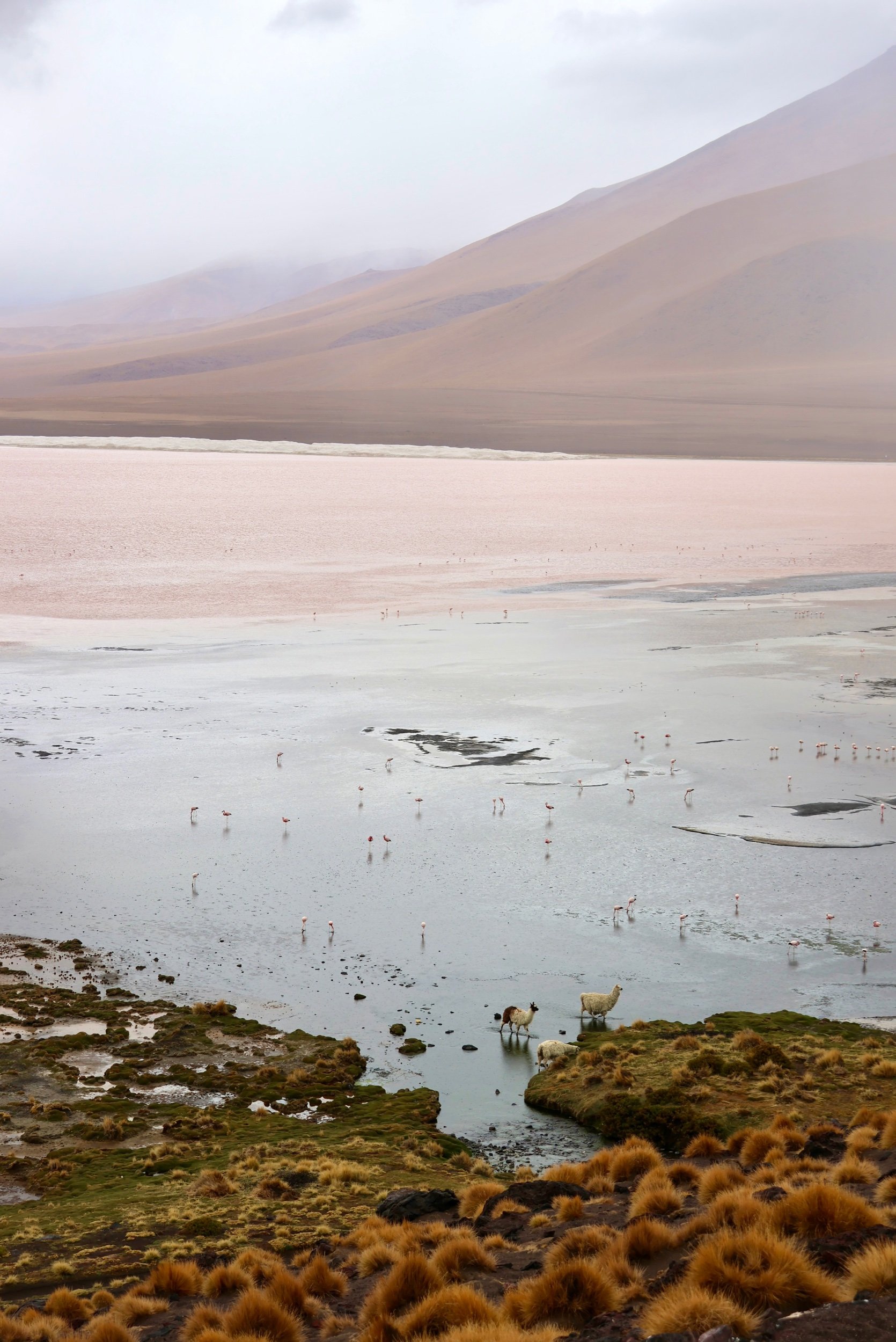
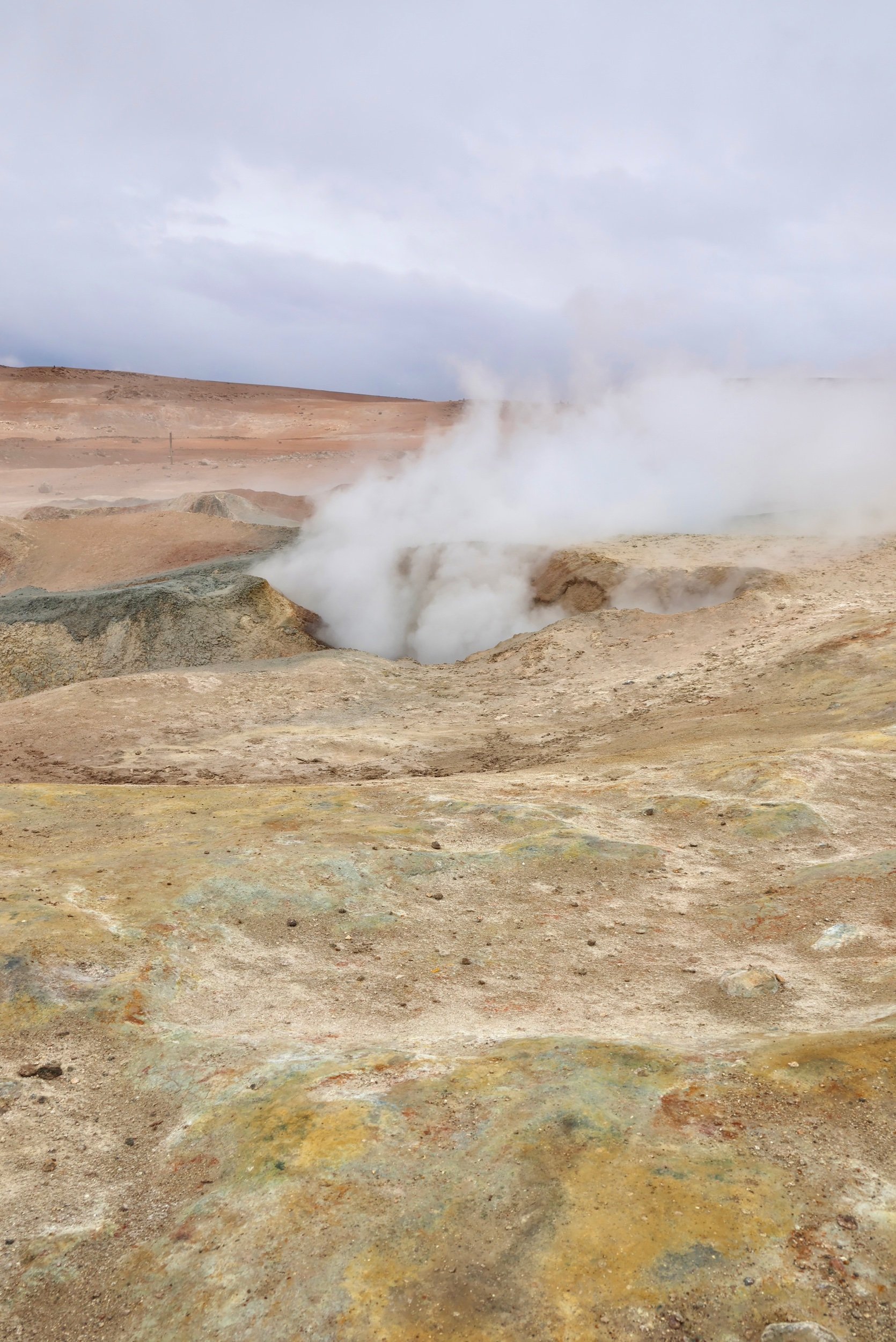
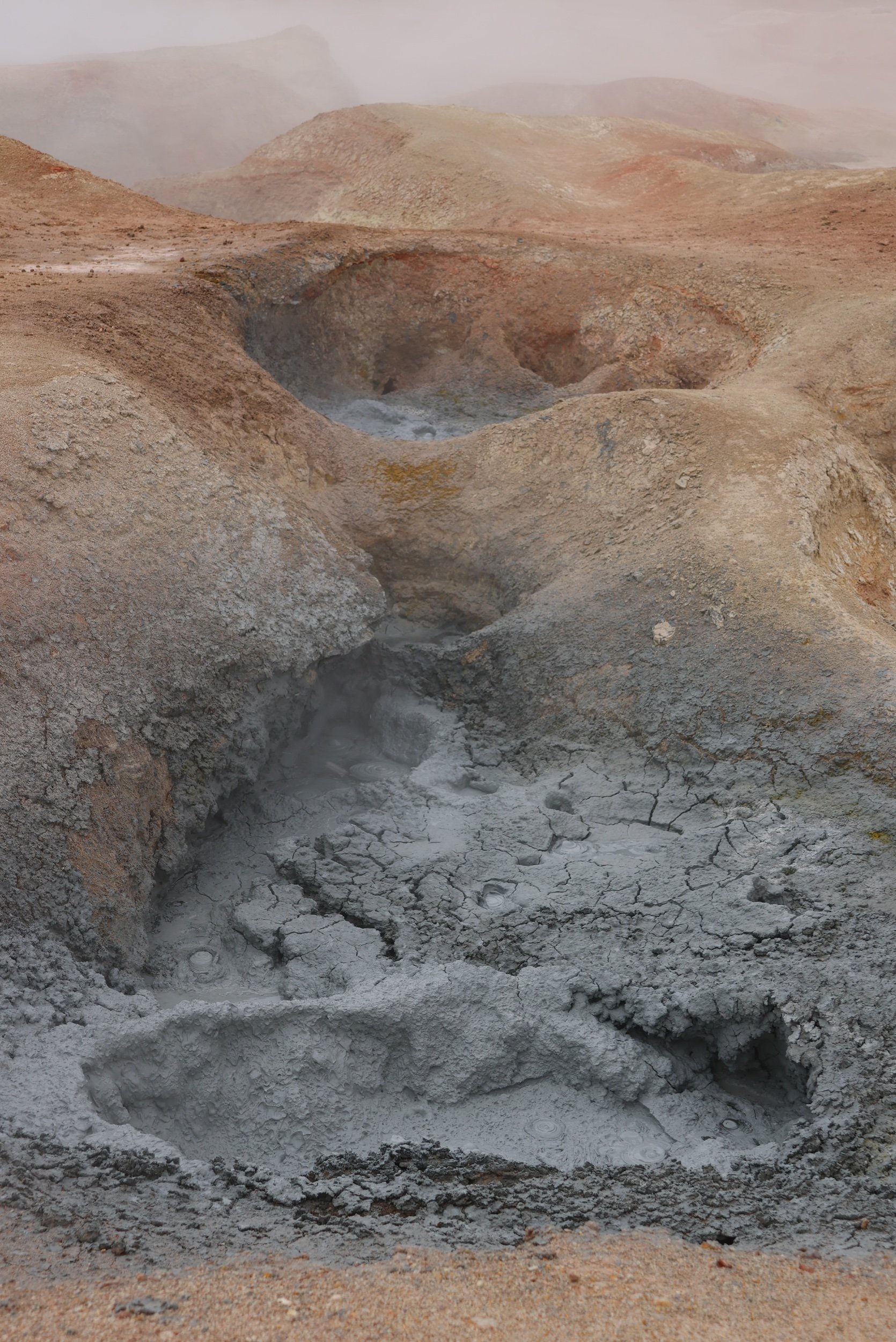
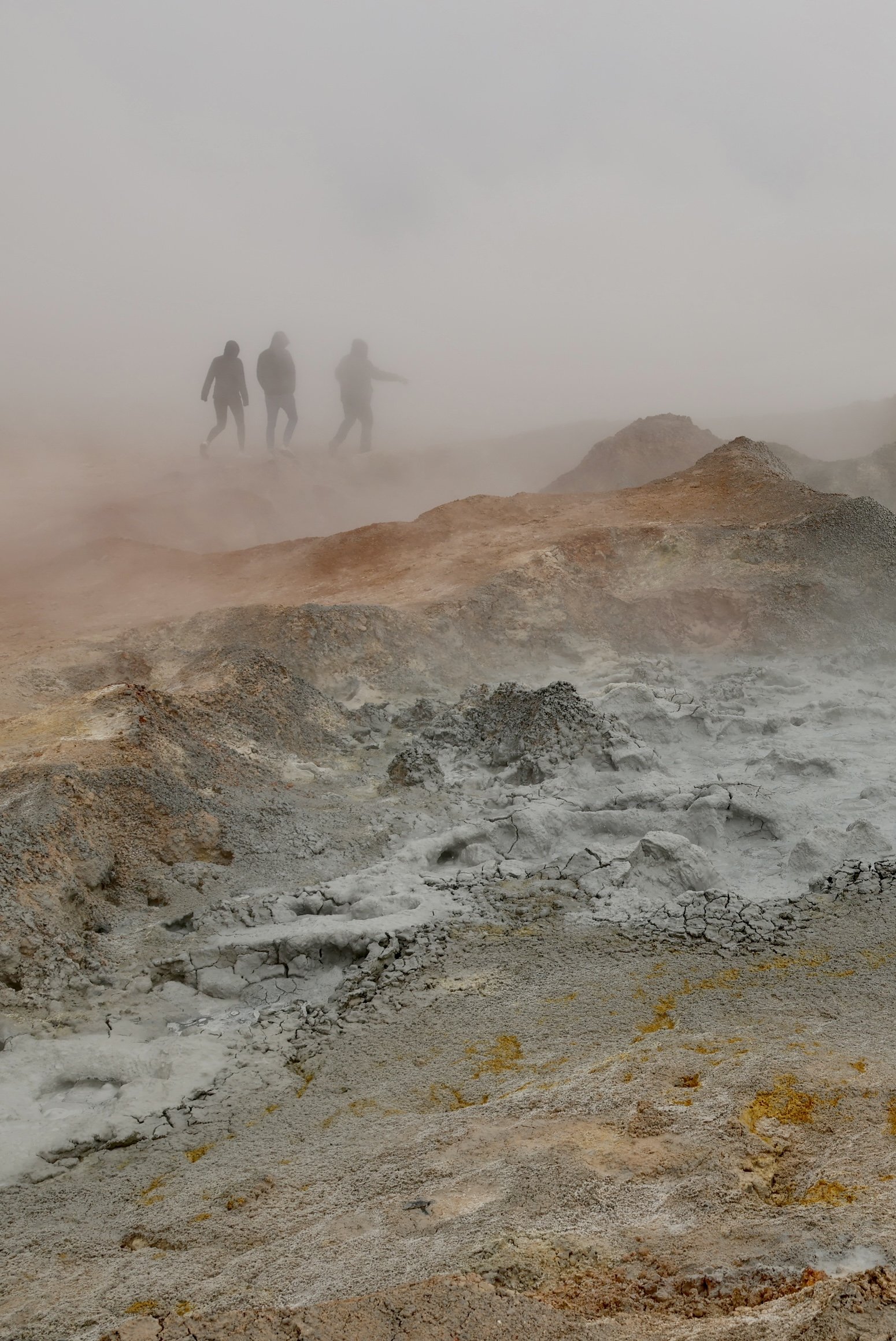


The Uyuni Salt Flats tour takes about you all the way to southern border of Bolivia and most tourists decide to take advantage and cross the border to Chile here, so day 3 of our tour was actually our last day in Bolivia. The landscapes and deserts on this last morning were truly surreal; we felt like we were on another planet. We spent the early morning driving through the Dali Desert. This is a desert named after Salvador Dali because the landscapes can look like some of his paintings. The low, thin clouds, angle of the sun, hills and mountains of the desert, and the color of the rock combined to produce this eerie landscape that was amazing to witness unfold as we drove by. We passed by more snow-capped peaks that were a mix of dead and active volcanoes. At the base of some of the peaks was a set of lagoons that were different colors; Laguna Blanco is a white and murky color while Laguna Verde has a green tint almost like a tropical ocean. A set of clouds and mist had moved in at this point so we were surrounded by fog and could only see a small piece of the lakes but this only added to the mystique of the desert.
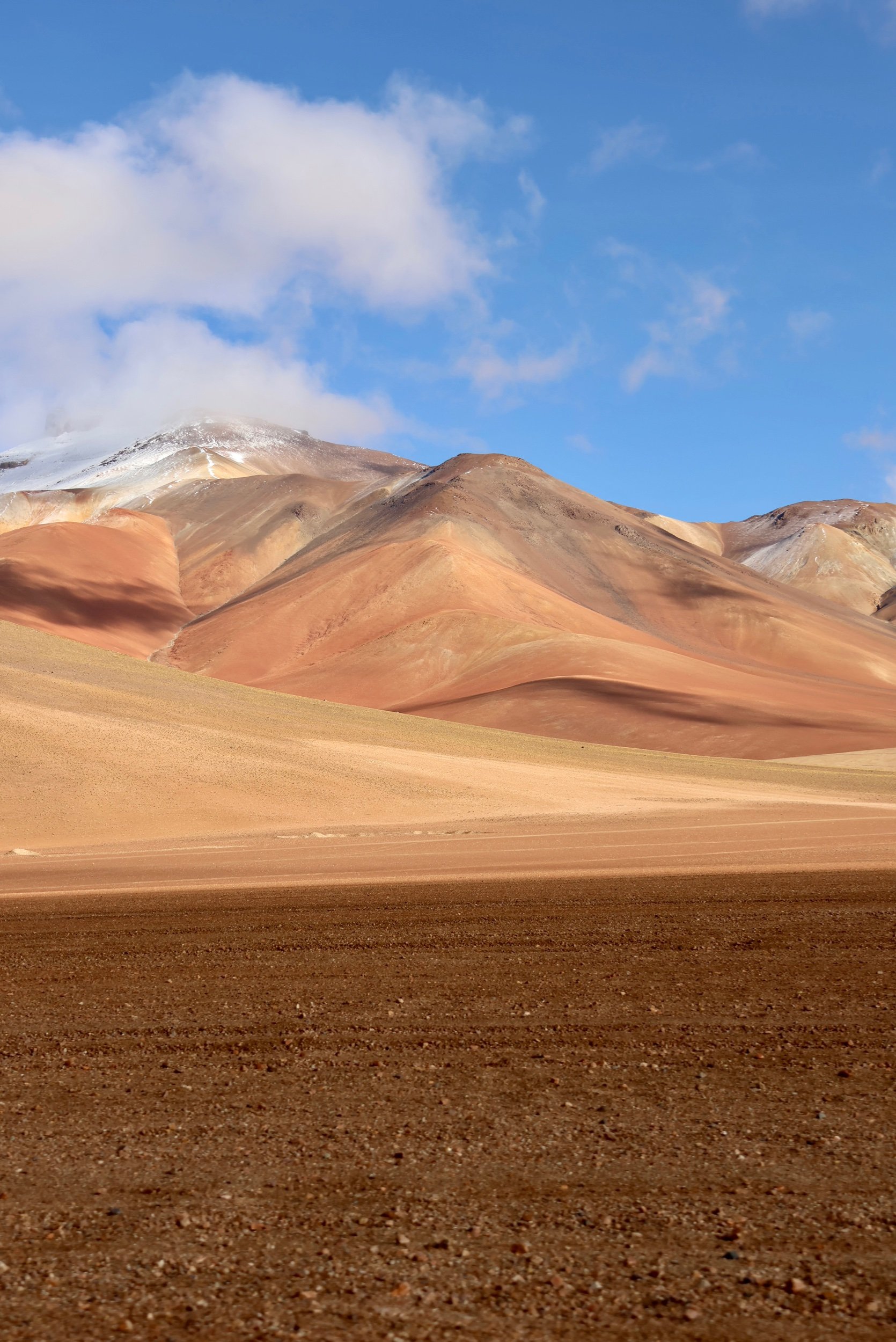
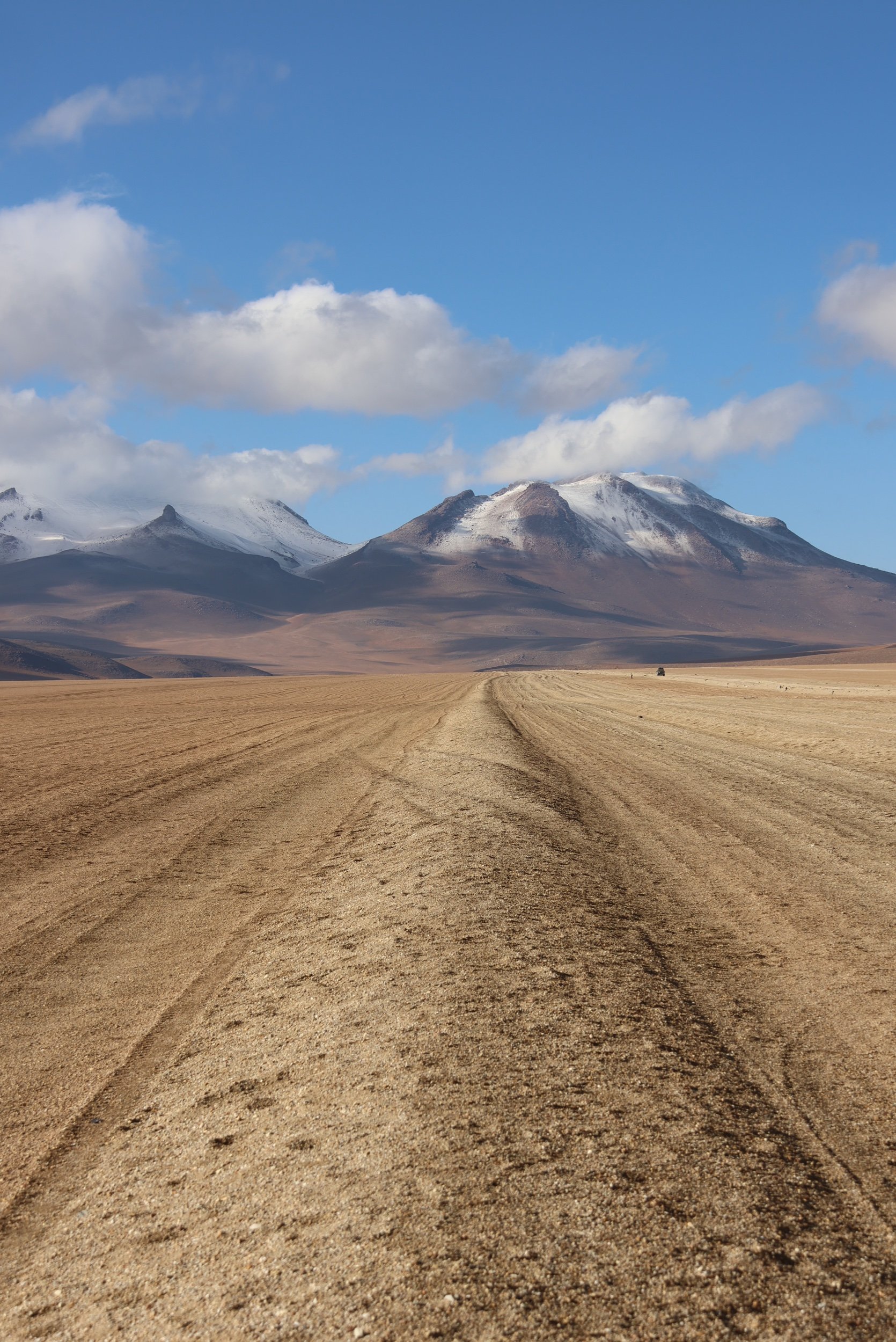
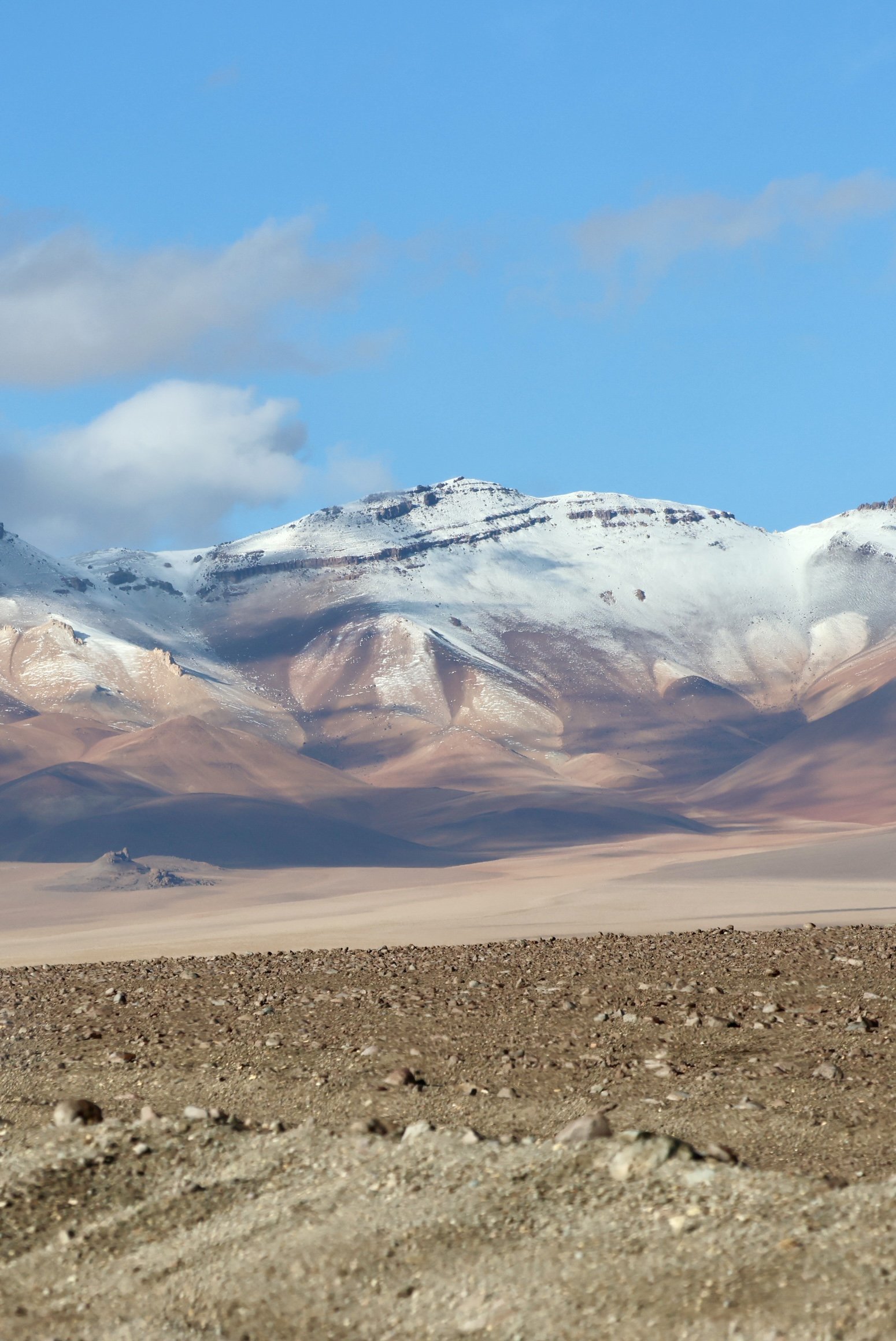
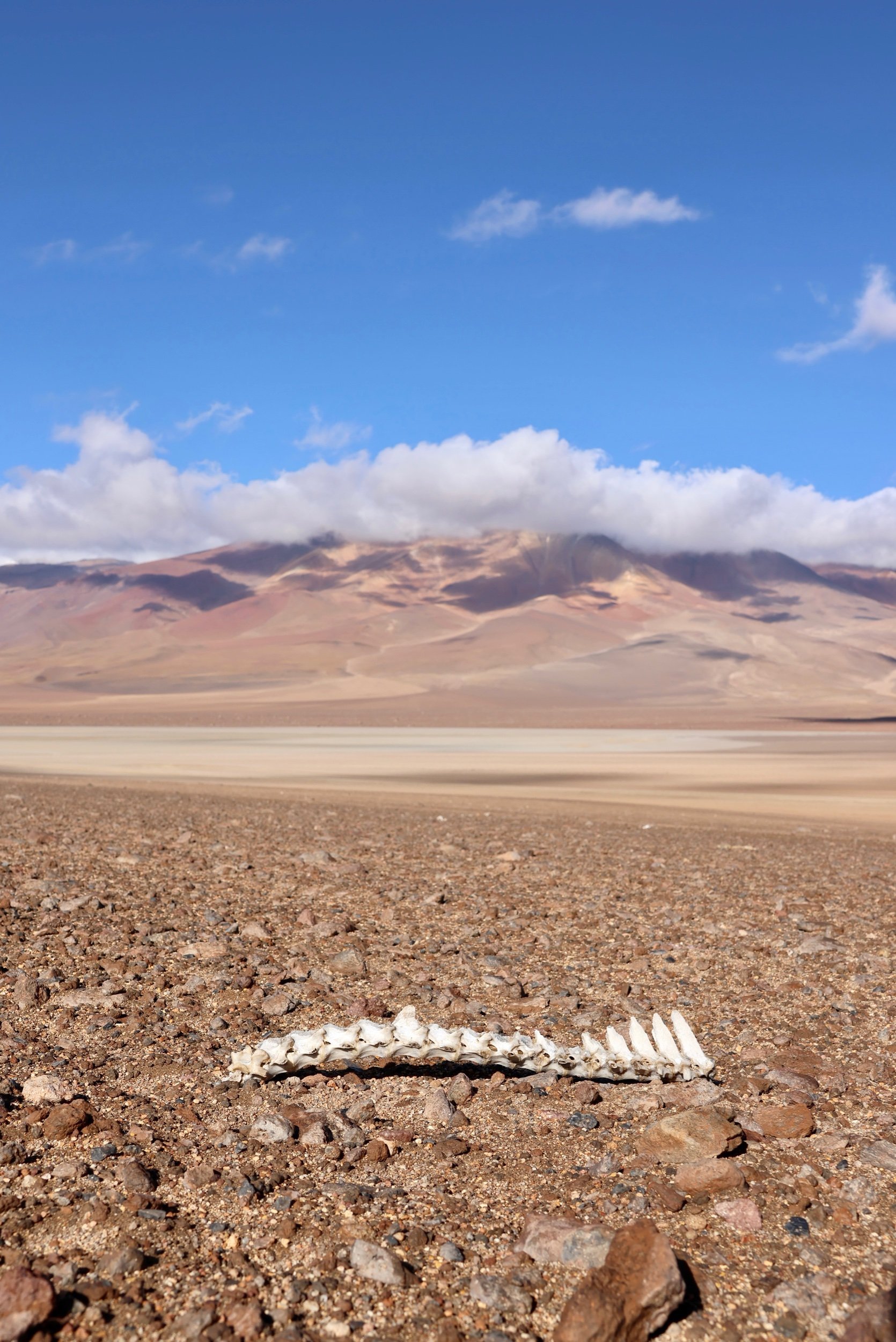
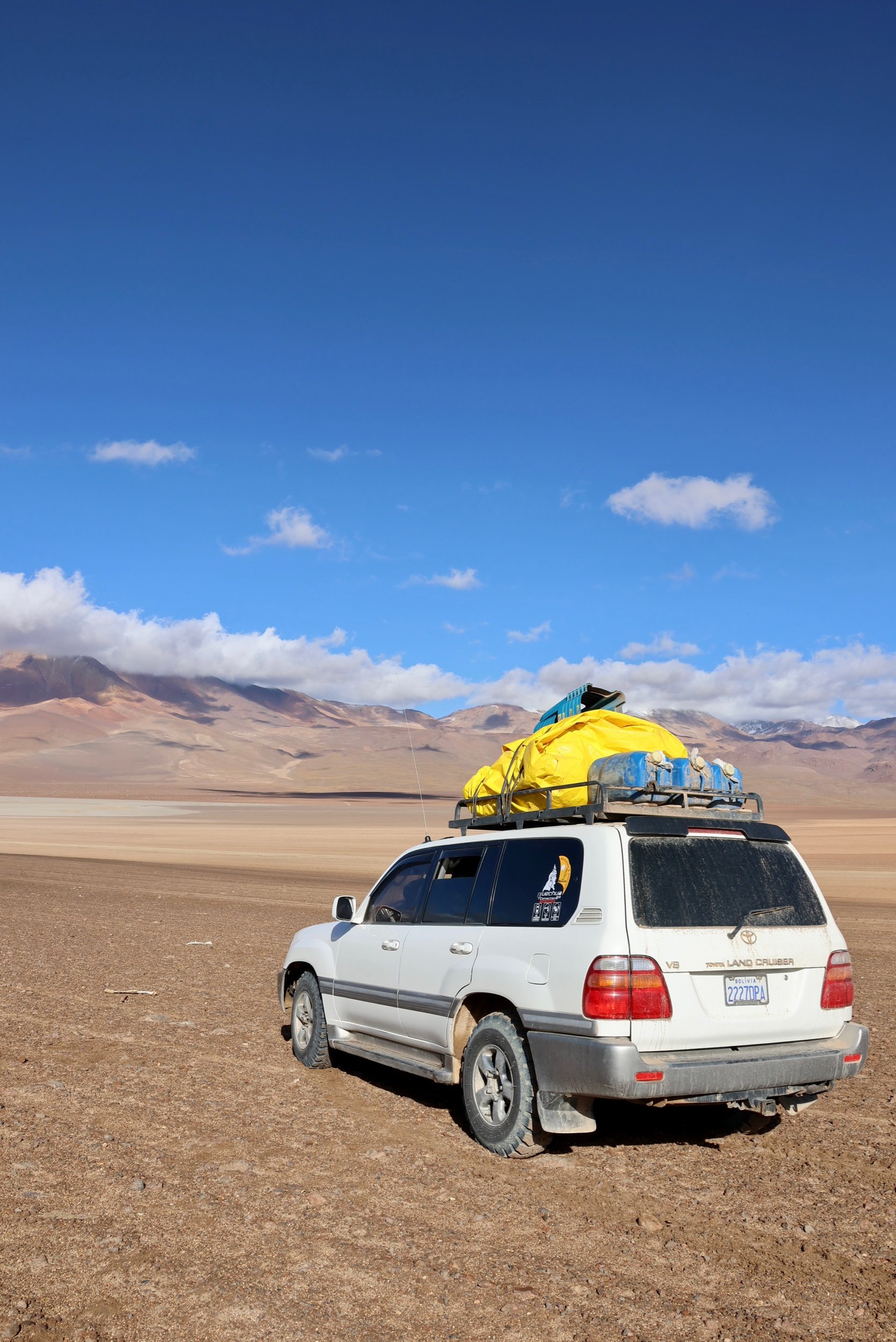
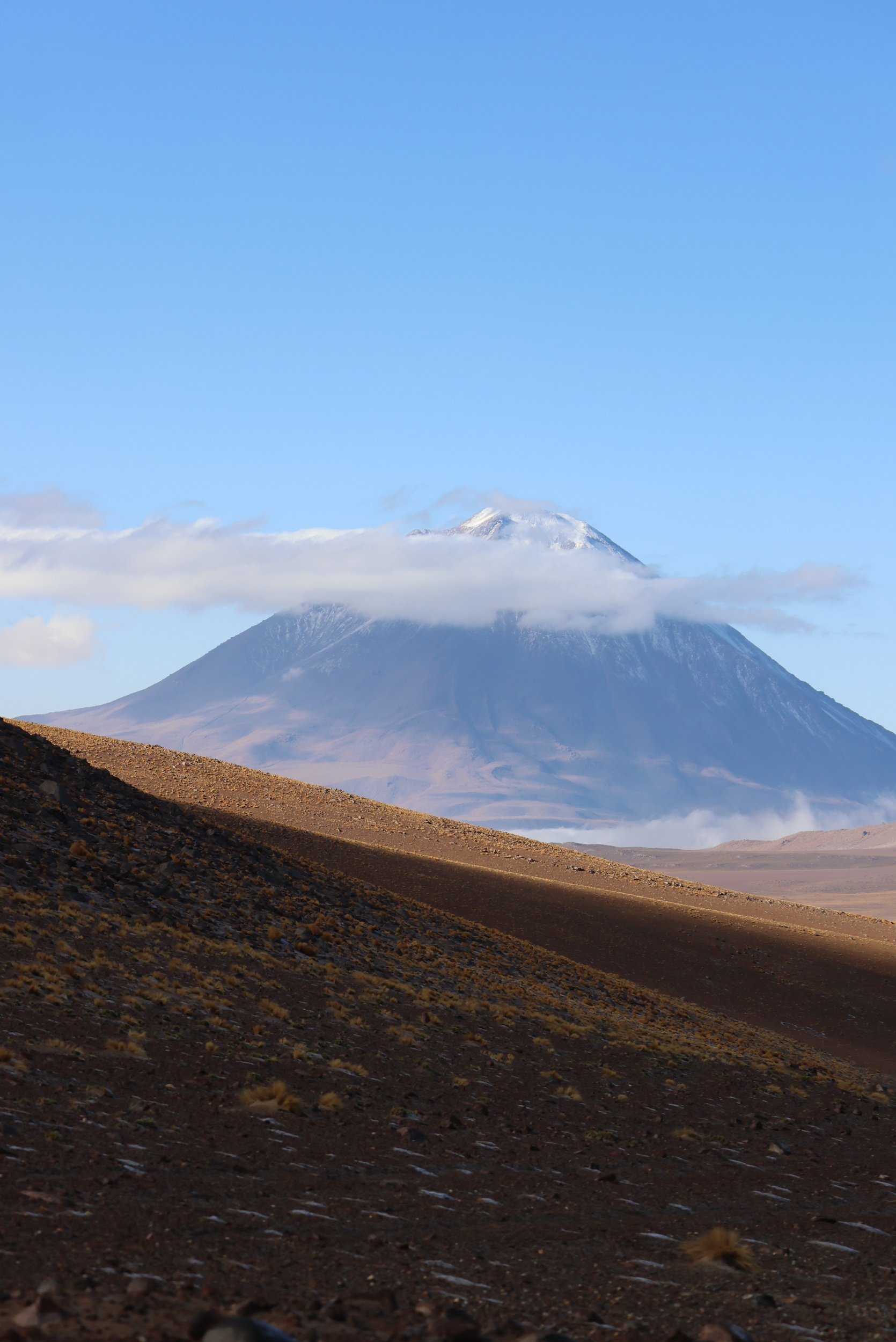



At this point our time in Bolivia had come to an end and we left our tour van to another bus which would take us across the border into Chile. The Salt Flats and surrounding mountains were an incredible experience and we were blown away by what we were able to witness. Partly that’s because we didn’t do any research beyond “Salt Flats” but mostly it was due to the incredible and awe-inspiring vistas located in this beautiful desert region.
